EAGAN, Minn. — The Vikings selected 15 players over the course of three days, setting an NFL record for a seven-round draft.
The choices included a pair of first-round picks on opening night, one selection in the second and third rounds on Friday and a whopping 11 players on Saturday.
Themes emerged and were reinforced throughout the draft, leading to the following six takeaways from Vikings.com's Eric Smith, Lindsey Young and Craig Peters.
1. Lose 3 corners, gain 3 corners | By Eric Smith
Perhaps the Vikings position group that took the biggest hit this offseason was cornerback, where Minnesota saw the departure of Trae Waynes and Mackensie Alexander in free agency, and Xavier Rhodes' contract was terminated. Rhodes opted to sign with Indianapolis. Those three players respectively led the cornerbacks group in snaps in 2019.
The Vikings certainly addressed this need in the draft, as they selected the same number of cornerbacks that they lost this offseason. Minnesota picked TCU's Jeff Gladney in the first round at No. 31, Cameron Dantzler of Mississippi State in the third round and Temple's Harrison Hand in the fifth round.
The Vikings may be young at corner, as 2018 first-rounder Mike Hughes and undrafted classmate Holton Hill lead the team in seniority, but they now have a collection of young and hungry players who are ready to learn and grow under Vikings Head Coach Mike Zimmer.
"I can't wait till we get a chance to see them on the field," Vikings General Manager Rick Spielman said of the three draft picks. "But on paper, and all the work we put into it, [we're] very excited about the depth we were able to add at corner.
"And plus, I don't want to forget about the young guys that we already have. I mean, Kris Boyd played well for us, key contributor on special teams," Spielman added. "Holton Hill, Mike Hughes … so we've got a lot of young depth there, and now we're going to add another layer of depth into that corner position. So, we feel very confident we've got a lot of young talent there to develop."
2. Vikings 1st 3 draft picks have 1st-round grades | By Lindsey Young
One, two and three.
Minnesota's first trio of draft picks were given first-round grades heading into the 2020 NFL Draft. The Vikings were able to get all three – including one in the second round – without trading up; in fact, they even traded down on Thursday night.
The Vikings snagged LSU wide receiver Justin Jefferson at No. 22. They then traded out of No. 25 and picked up the 31st pick, with which they drafted Gladney.
Dane Brugler of The Athletic had ranked Jefferson 17th and Gladney 29th in his Top 100 Draft Board, which can be accessed as part of his full 2020 NFL Draft Guide.
On Day 2, there was some speculation on whether or not Minnesota would trade up, but it turned out the organization didn't need to in order to get the player it wanted. With the 58th spot, the Vikings grabbed Boise State tackle Ezra Cleveland, whom Brugler ranked 30th overall in his Top 100.
Vikings Director of College Scouting Jamaal Stephenson emphasized that Cleveland fits the parameters of Minnesota's offense and could be a great value pick for the team.
"He's a tough guy who is athletic, kind of like [Vikings right tackle] Brian O'Neill a couple of years ago, when we were talking about him, just how athletic he is," Stephenson said. "I mean, this guy ran a [4.93 40-yard dash] at the combine. He's mature. He's tough. He's a grinder. He loves football. So we think he's a guy who's going to come in and be able to help us right away."
3. Specific holes provided a compass | By Craig Peters
The Vikings were able to address multiple positions of need, accounting for significant departures in free agency on defense, as well as continuing to fortify the offensive line with an early pick and later selections.
In addition to the shortage of corners, Minnesota also lacked depth at safety behind Harrison Smith and Anthony Harris after Jayron Kearse and Andrew Sendejo departed in free agency.
Enter Josh Metellus out of Michigan at 205 and Brian Cole II from Mississippi State via Michigan at 249.
The Vikings also added to their front seven with consecutive selections of South Carolina defensive end D.J. Wonnum, Baylor defensive tackle James Lynch and Oregon linebacker Troy Dye in the fourth round.
Six of Minnesota's first eight picks are defensive players, creating an opportunity for a who new wave under Zimmer.
Michigan State DE Kenny Willekes joined the mix in the seventh round, becoming the eighth of nine total defensive players selected.
On offense, the Vikings kept much of their focus up front by using three of the six picks used on that side of the ball to add to the line with Cleveland, Oregon State left tackle Blake Brandel at No. 203 and Washburn guard Kyle Hinton.
4. Versatility adds value to Vikings picks | By Lindsey Young
Metellus showed his versatility for the Wolverines – and it's likely that quality helped his case in the draft.
Metellus lined up at outside linebacker, both safety spots, outside corner and in the slot.
"At the end of the day, I just want to be able to get on the field," Metellus said. "Moving around at Michigan has helped me a lot, getting a different feel for the game and helping my football I.Q.
"That's the biggest thing – I'll be able to come in and do whatever the coaches ask," he added.
Metellus wasn't the only player Minnesota drafted who has shown an ability to be versatile.
The Vikings believe that Jefferson and Gladney are versatile enough to play outside or in the slot, albeit on opposite sides of the ball.
Hand, who was drafted in the fifth round, could have an opportunity at safety and could be a special teams contributor. They also drafted Miami receiver K.J. Osborn (176th), whom Spielman believes could have a shot at winning the team's punt return job.
"We have a couple guys that can play outside but also can slide inside at [nickel]. So I know when you get banged up or get injuries in the secondary, it's just like the interior offensive line," Spielman said. "You're hoping you can get guys that can play multiple positions. I think a lot of the guys that we were able to draft … over the past three days, have the ability to play multiple positions in the secondary."
5. Turning free agency losses into gains
The Vikings love to draft, develop and retain. As pointed out during the broadcast by ESPN/NFL Network, a league-high 56 percent of the players on Minnesota's 2019 had been drafted by the team.
View images of all of the Minnesota Vikings 2020 NFL Draft picks.

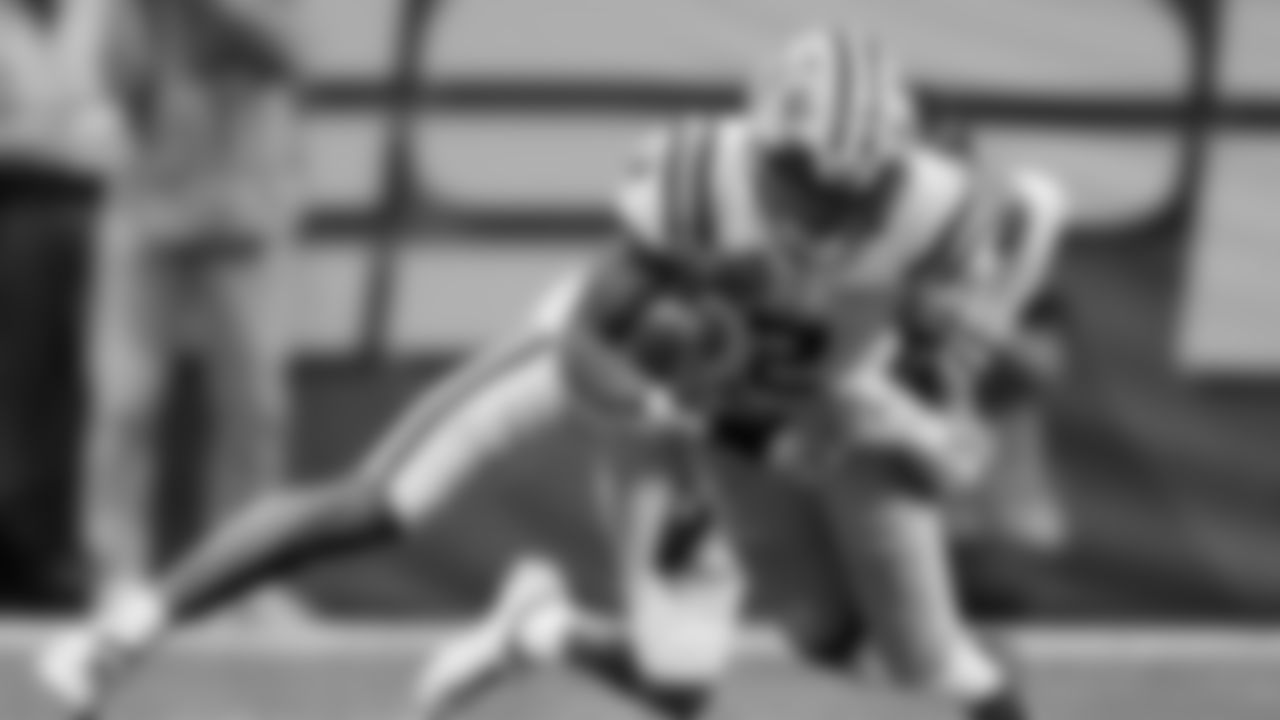
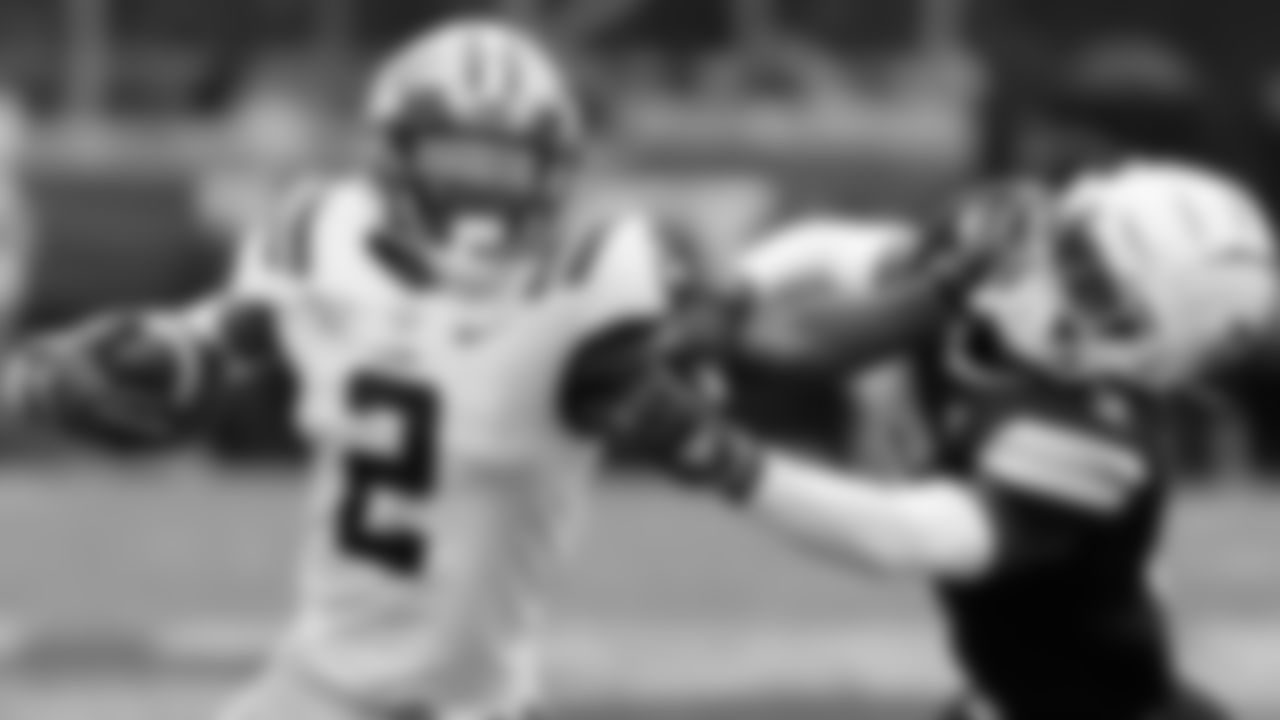


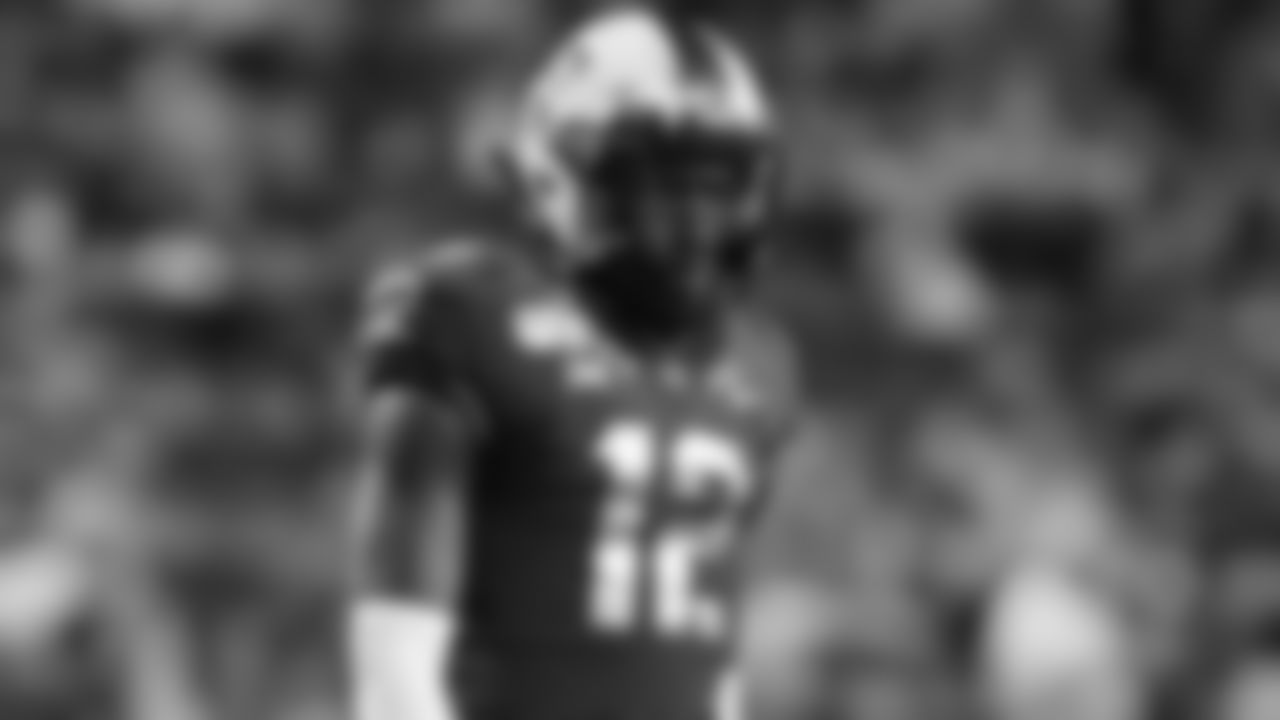


CB Jeff Gladney
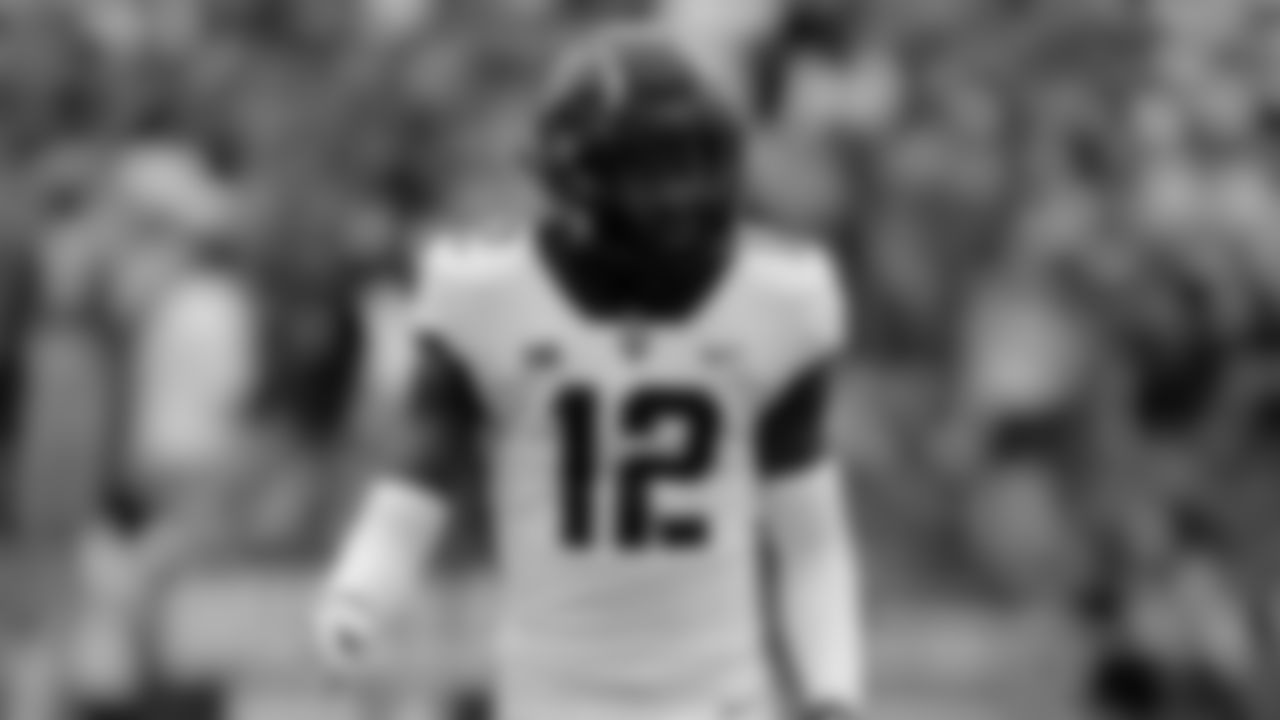
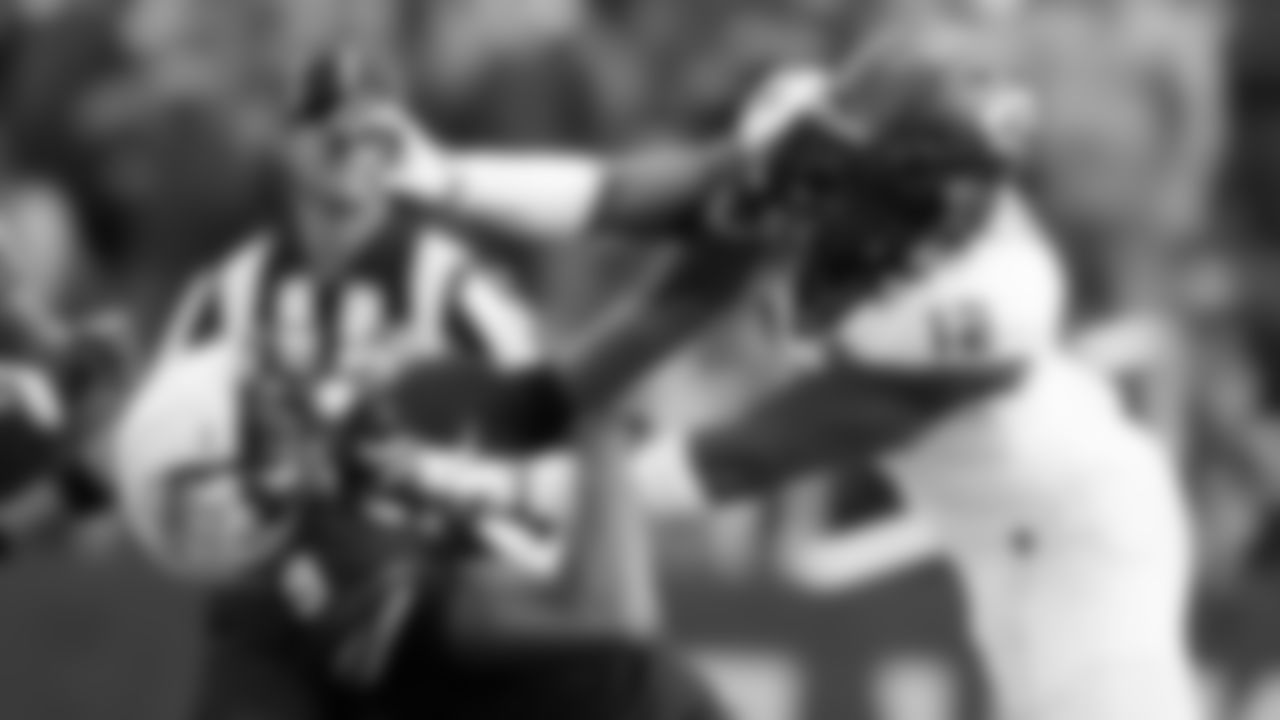

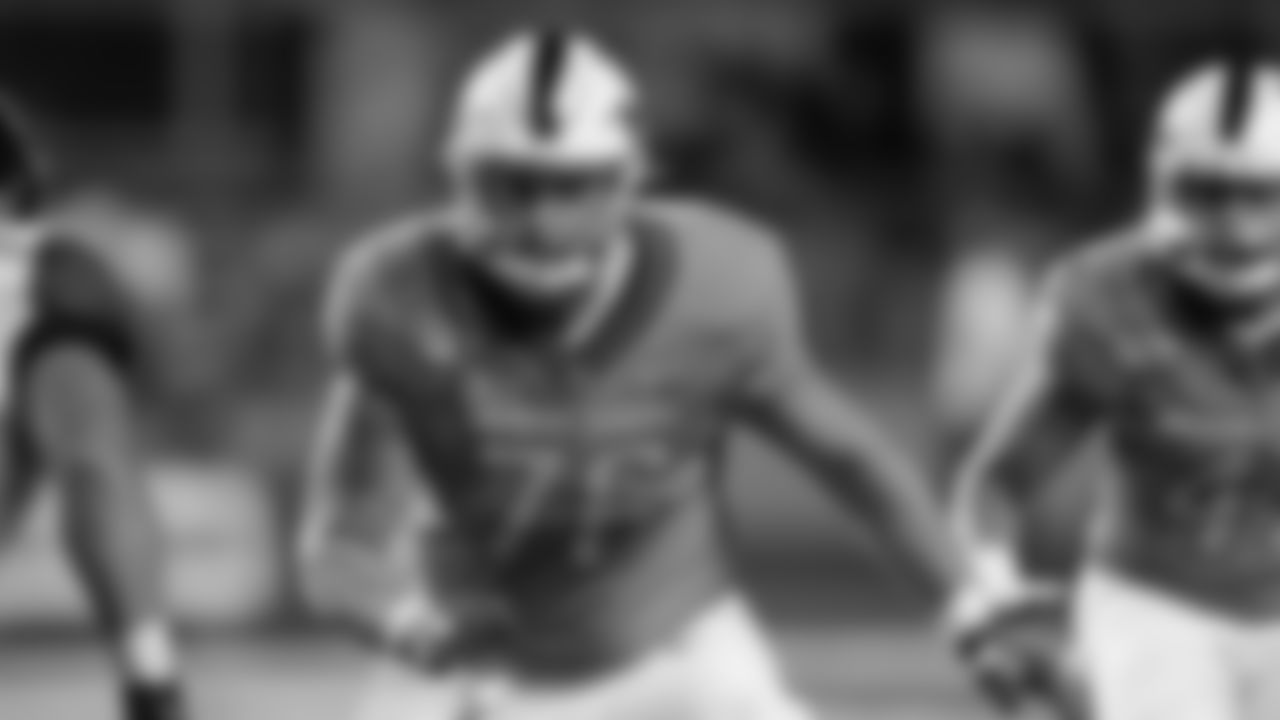
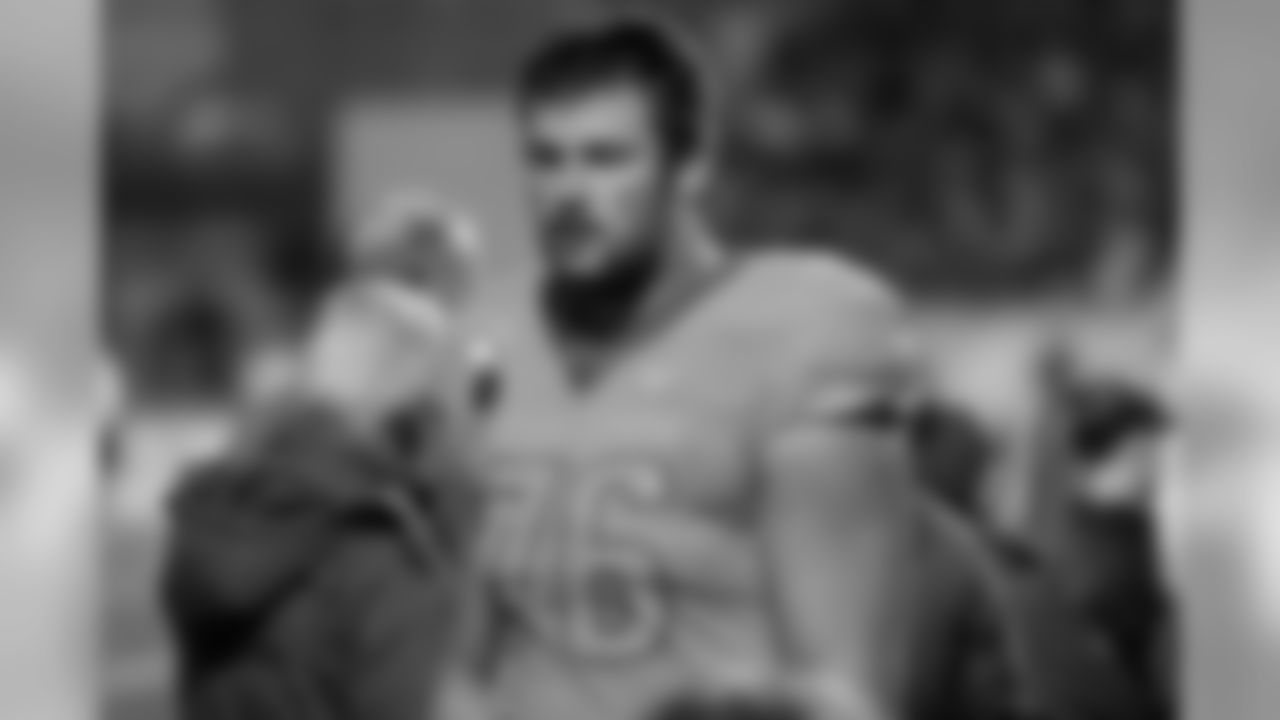
Boise State offensive lineman Ezra Cleveland (76) on the sidelines during the first half of an NCAA college football game against Hawaii, Saturday, Oct. 12, 2019, in Boise, Idaho. Boise State won 59-37. (AP Photo/Steve Conner)

CORRECTS DATELINE TO TALLAHASSEE, FLA., INSTEAD OF ORLANDO, FLA. - Boise State running back Robert Mahone (34) is lifted in congratulations by offensive lineman Ezra Cleveland (76) for scoring the winning touchdown during the fourth quarter of an NCAA college football game against Florida State, Saturday, Aug. 31, 2019 in Tallahassee, Fla. (AP Photo/Gary McCullough)

Boise State offensive lineman Ezra Cleveland, left, battles against Hawaii defensive lineman Kaimana Padello, right, in the first half of an NCAA college football game, Saturday, Oct. 12, 2019, in Boise, Idaho. Boise State won 59-37. (AP Photo/Steve Conner)
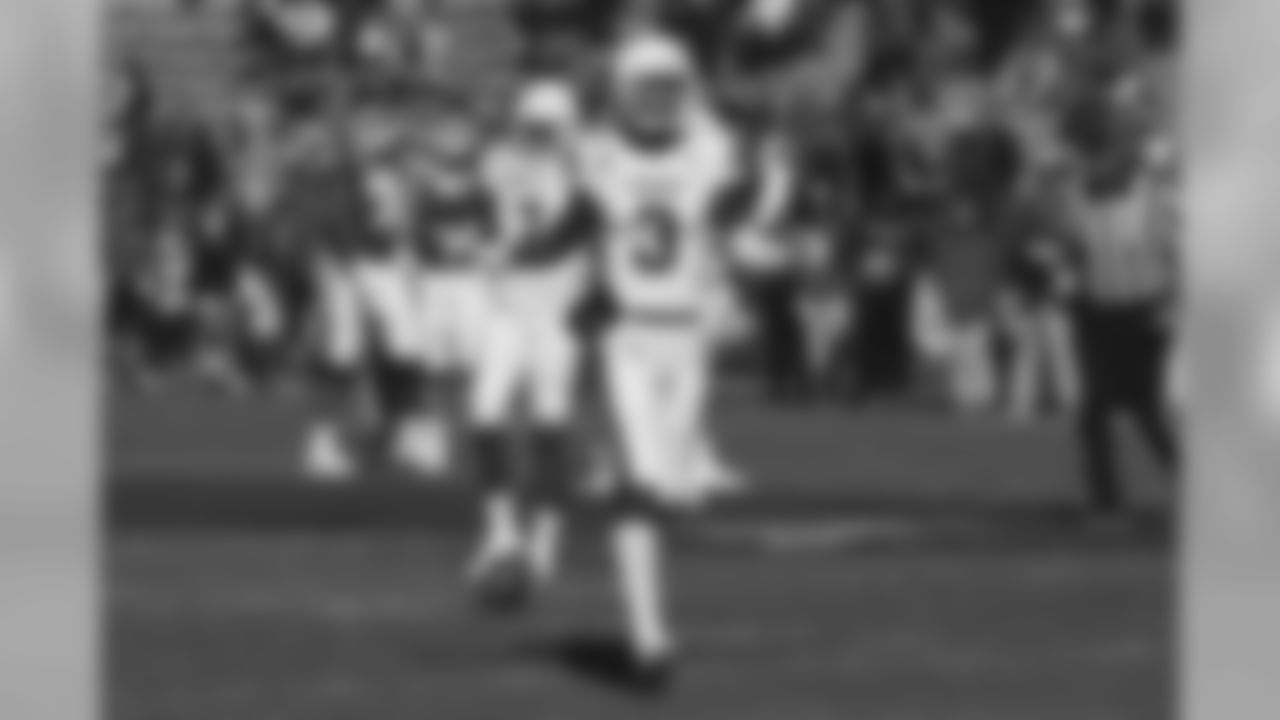
Mississippi State defensive back Cameron Dantzler (3) defends on a pass play against Arkansas during an NCAA college football game, Saturday, Nov. 2, 2019 in Fayetteville, Ark. (AP Photo/Michael Woods)

Mississippi State defensive back Cameron Dantzler runs a drill at the NFL football scouting combine in Indianapolis, Sunday, March 1, 2020. (AP Photo/Michael Conroy)

Mississippi State cornerback Cameron Dantzler (3) returns an interception against Louisiana-Lafayette during the first half of an NCAA college football game in New Orleans, Saturday, Aug. 31, 2019. (AP Photo/Chuck Cook)

Mississippi State cornerback Cameron Dantzler (3) defends Louisiana-Lafayette wide receiver Ja'Marcus Bradley (2) in the second half of an NCAA college football game in New Orleans, Saturday, Aug. 31, 2019. Mississippi State won, 38-28. (AP Photo/Chuck Cook)
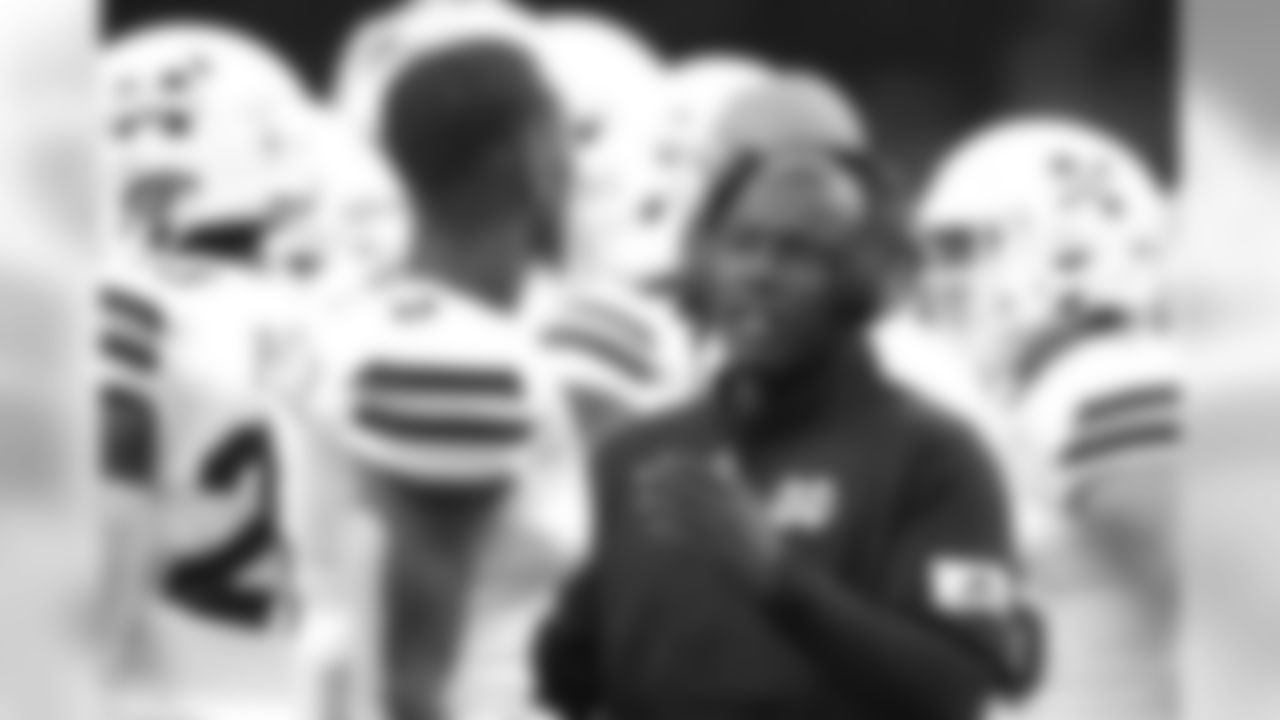
Mississippi State assistant coach Terrell Buckley talks to cornerback Cameron Dantzler (3) in the second half of their NCAA college football game against Louisiana-Lafayette in New Orleans, Saturday, Aug. 31, 2019. Mississippi State won, 38-28. (AP Photo/Chuck Cook)

FILE - In this Saturday, Nov. 11, 2017, file photo, Florida quarterback Feleipe Franks (13) attempts to elude South Carolina defensive lineman D.J. Wonnum (8) during the second half of an NCAA college football game in Columbia, S.C. The Southeastern Conference is filled with young quarterbacks this season, with many teams putting their offenses in the hands of freshmen or sophomores. (AP Photo/Sean Rayford, File)
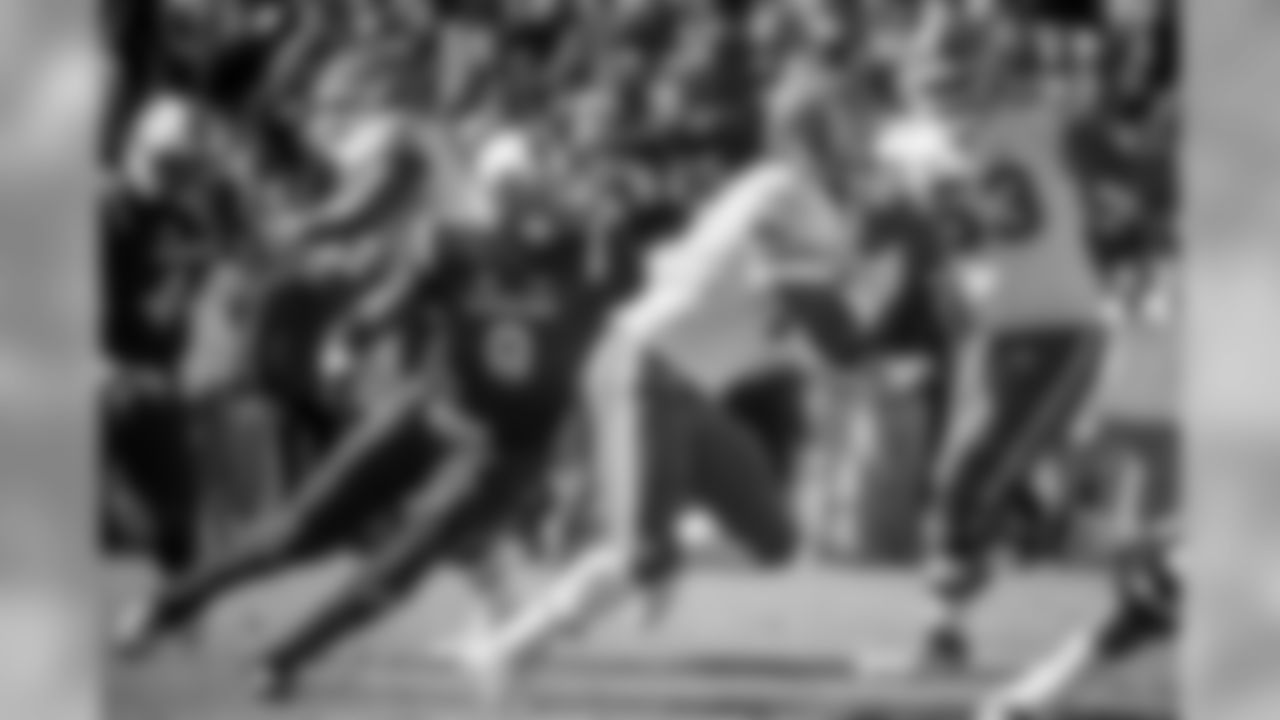
South Carolina defensive lineman D.J. Wonnum (8) pursues Florida quarterback Malik Zaire (8) during the first half of an NCAA college football game Saturday, Nov. 11, 2017, in Columbia, S.C. South Carolina defeated Florida 28-20. (AP Photo/Sean Rayford)
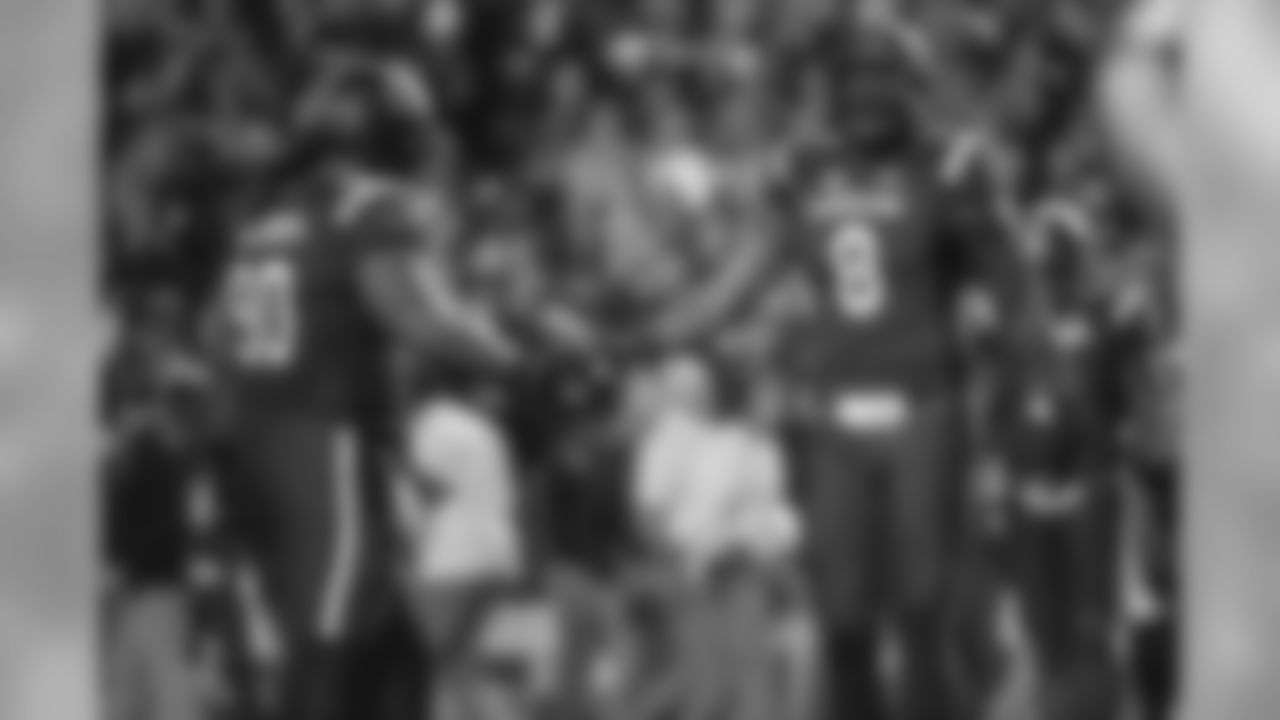
South Carolina defensive lineman D.J. Wonnum (8) and Taylor Stallworth (90) react after a play during the first half of an NCAA college football game against Clemson on Saturday, Nov. 25, 2017, in Columbia, S.C. Clemson defeated South Carolina 34-10. (AP Photo/Sean Rayford)
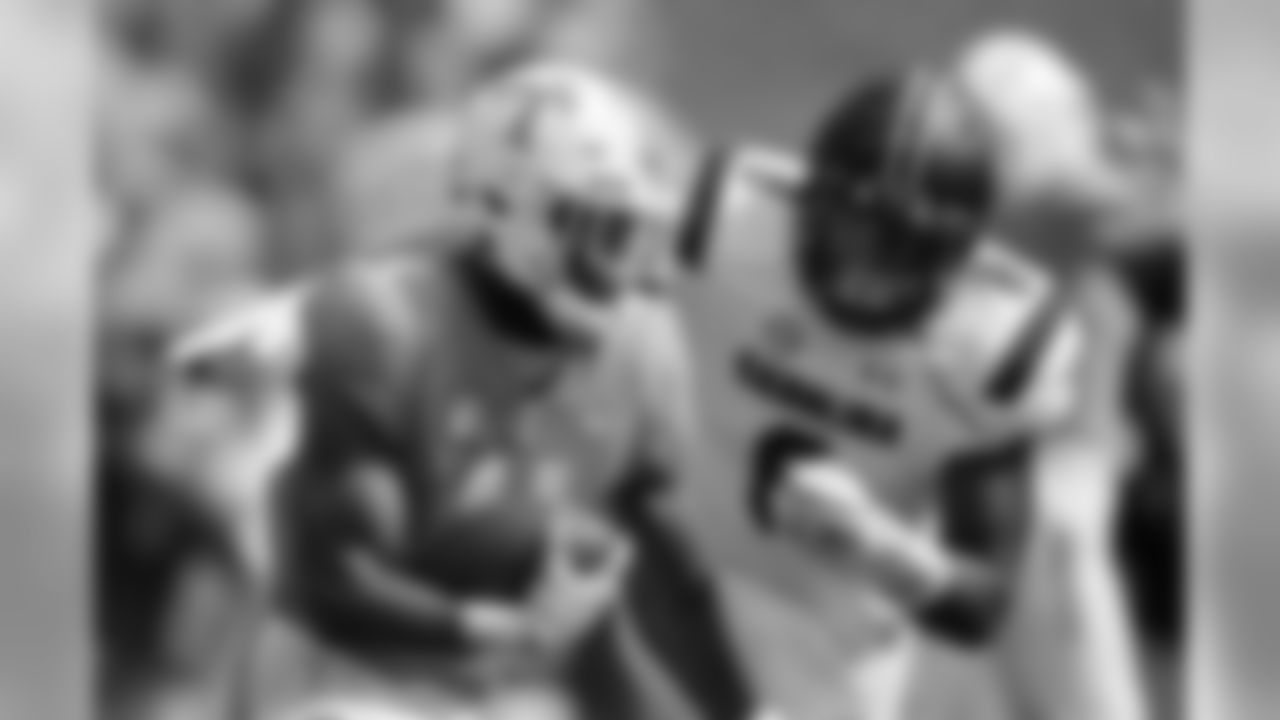
Tennessee running back John Kelly (4) runs for yardage as South Carolina defensive lineman D.J. Wonnum (8) chases in the first half of an NCAA college football game Saturday, Oct. 14, 2017, in Knoxville, Tenn. (AP Photo/Wade Payne)
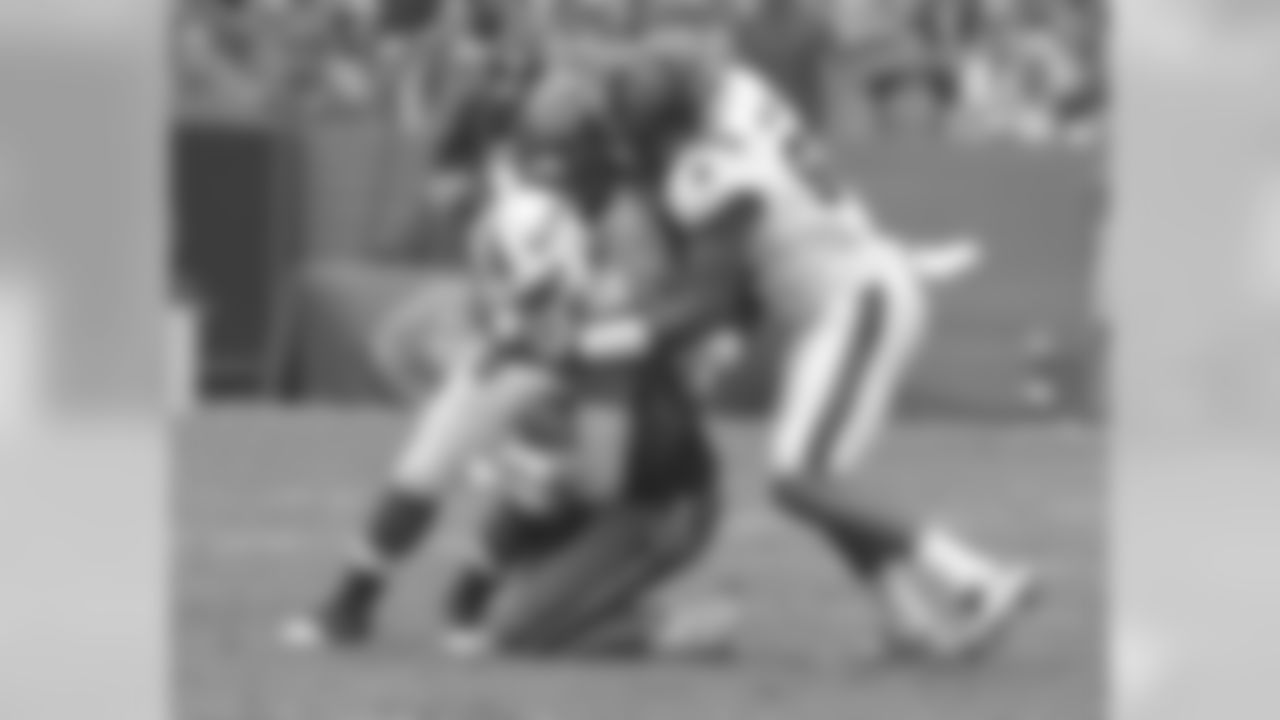
Florida quarterback Austin Appleby (12) is stopped for a 1-yard loss by South Carolina defensive lineman Kelsey Griffin, left, and defensive lineman D.J. Wonnum, right, during the first half of an NCAA college football game, Saturday, Nov. 12, 2016, in Gainesville, Fla. (AP Photo/John Raoux)

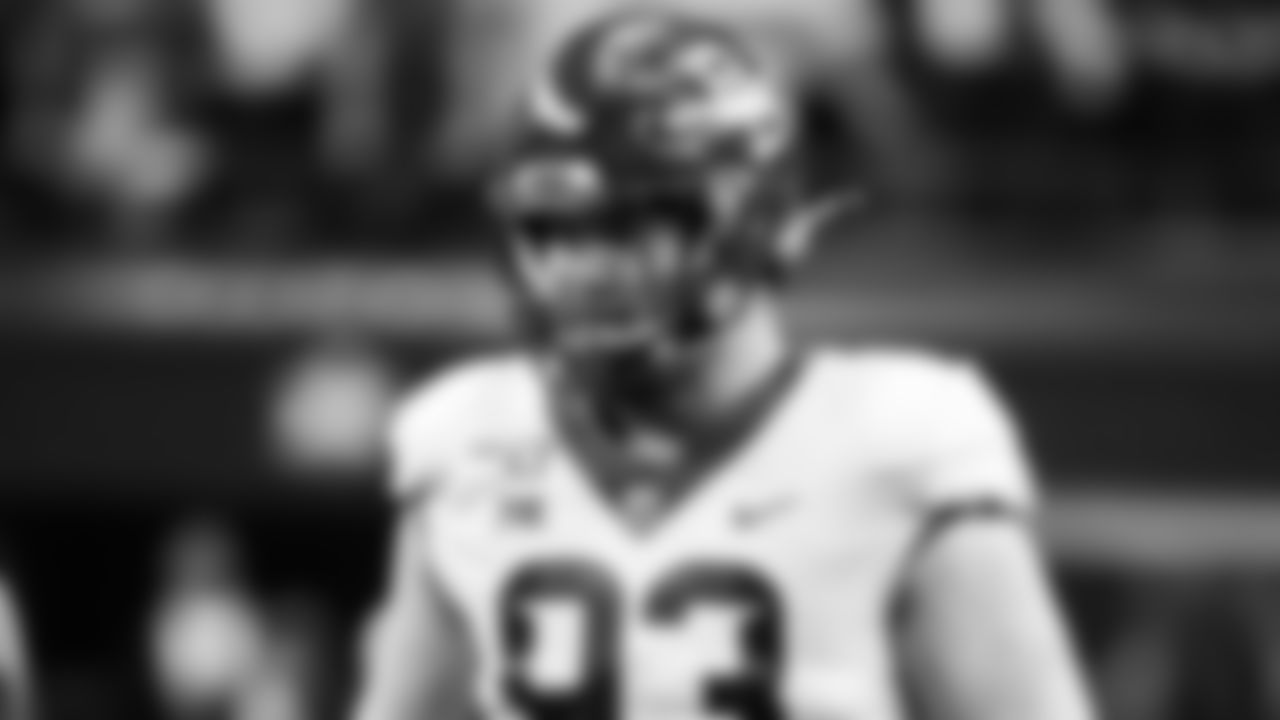
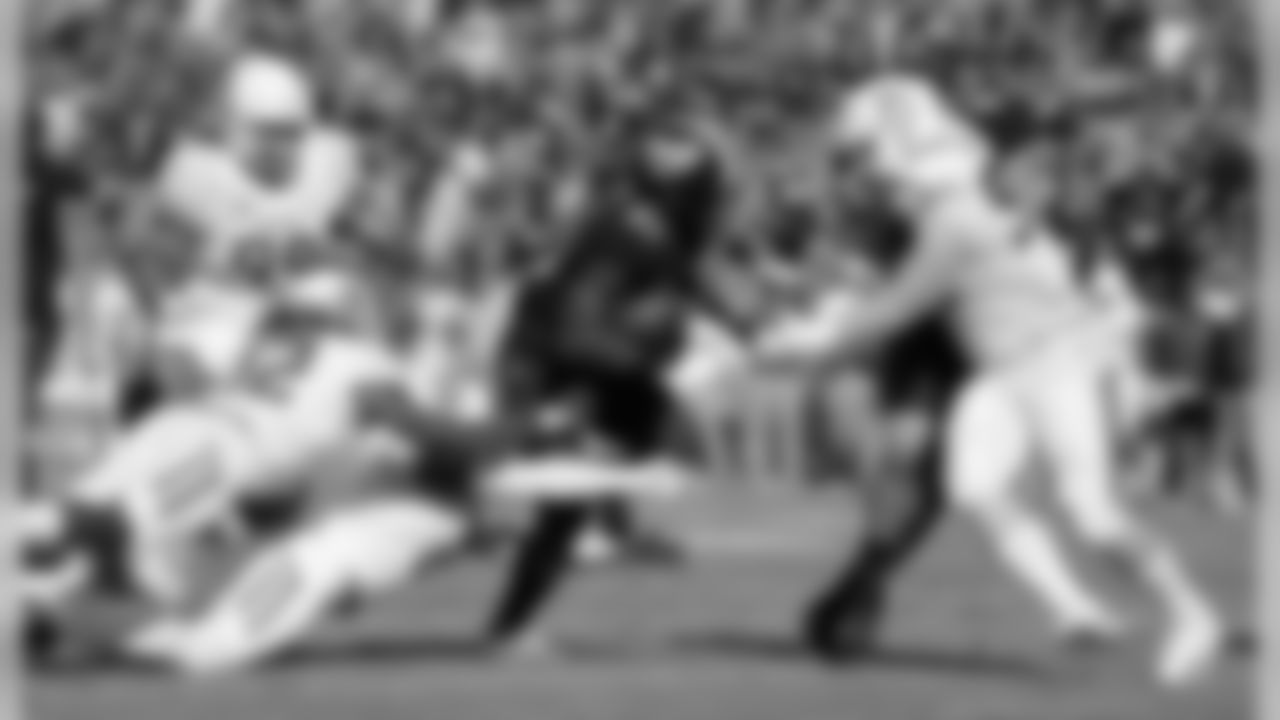
TCU running back Kyle Hicks (21) looks for room against Baylor safety Davion Hall (12) and Baylor defensive tackle James Lynch (93) during the first half of an NCAA college football game, Friday, Nov. 24, 2017, in Fort Worth, Texas. TCU won 45-22. (AP Photo/Brandon Wade)

Baylor defensive tackle James Lynch (93) sacks West Virginia quarterback Will Grier (7) in the first half of an NCAA college football game, Saturday, Oct. 21, 2017, in Waco, Texas. (AP Photo/Jerry Larson)
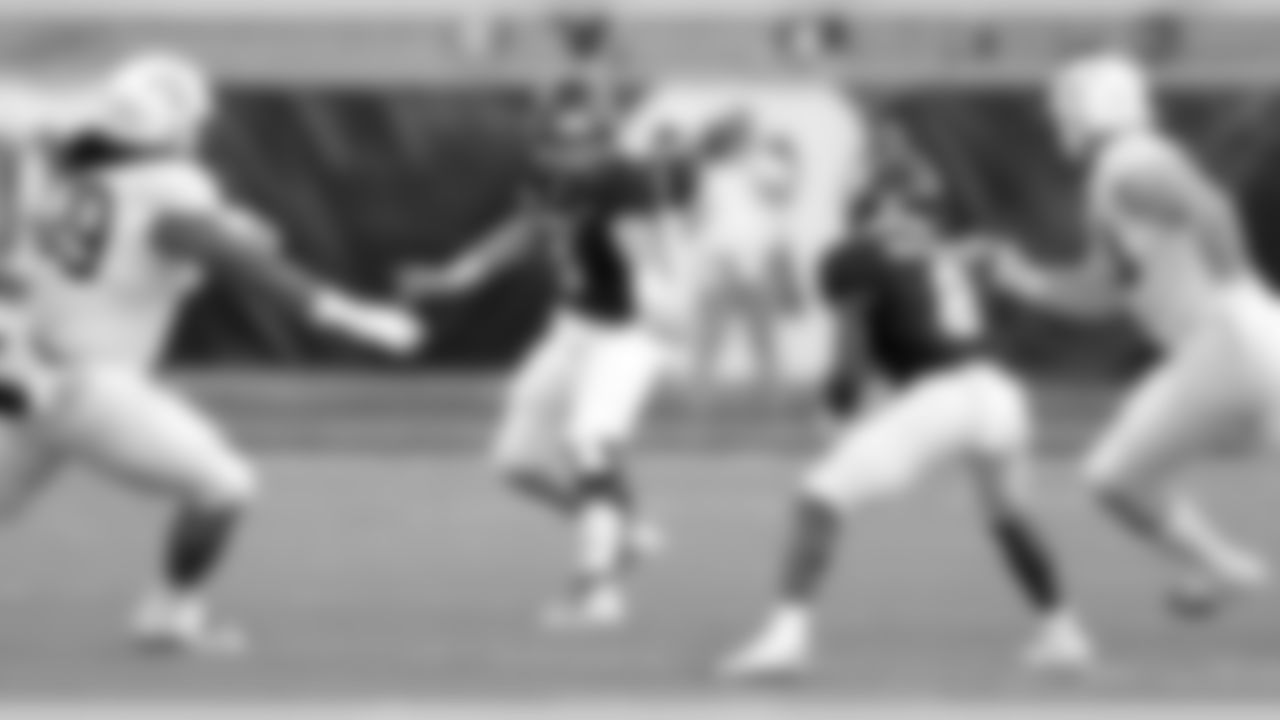
Rice quarterback Wiley Green (5) pitches out to wide receiver Cameron Montgomery (8) as Baylor defensive tackles Bravvion Roy, left, and defensive tackle James Lynch close in during the first half of an NCAA college football game Saturday, Sept. 21, 2019, in Houston. (AP Photo/Michael Wyke)

Oregon linebacker Troy Dye (35) dives and sacks Utah quarterback Troy Williams (3) in the first half of an NCAA college football game, Saturday, Nov. 19, 2016, in Salt Lake City. (AP Photo/George Frey)

Colorado running back Phillip Lindsay (23), blows past Oregon linebacker Troy Dye (35), in an NCAA college football game Saturday, Sept. 24, 2016 in Eugene, Ore. (AP Photo/Thomas Boyd)
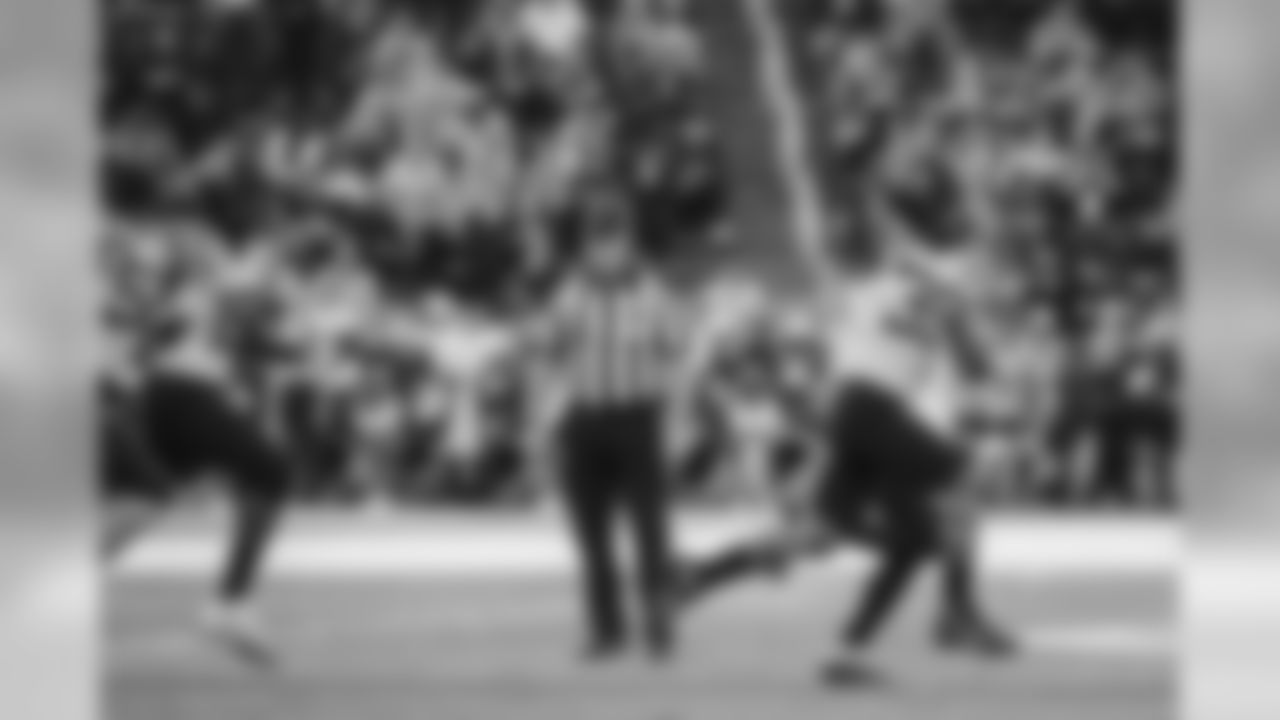
Oregon linebacker Troy Dye (35), celebrates an interception that set up a last minute second quarter touchdown against Arizona State in an NCAA college football game Saturday, Oct. 29, 2016 in Eugene, Ore. (AP Photo/Thomas Boyd)

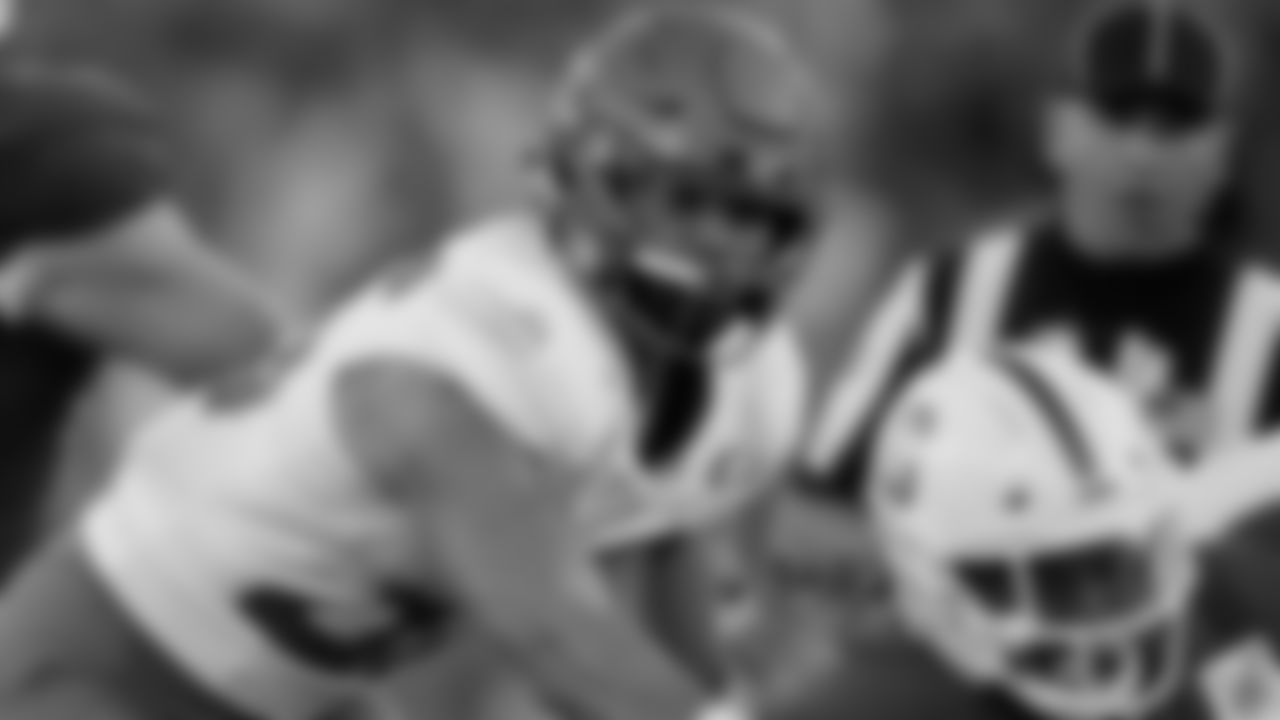

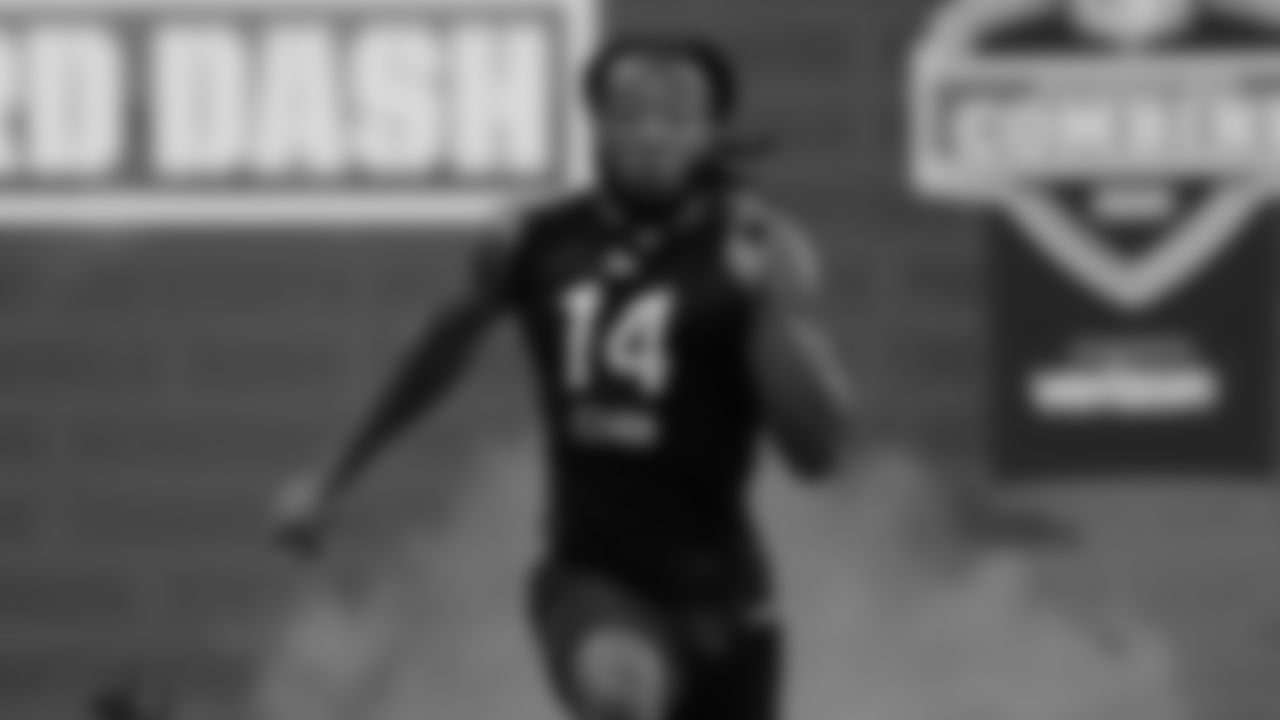


Temple cornerback Harrison Hand (23) stops Maryland place kicker Mike Shinsky (41) on the fake field goal during the first half of an NCAA college football, Saturday, Sept. 14, 2019, in Philadelphia. Temple won 20-17. (AP Photo/Chris Szagola)
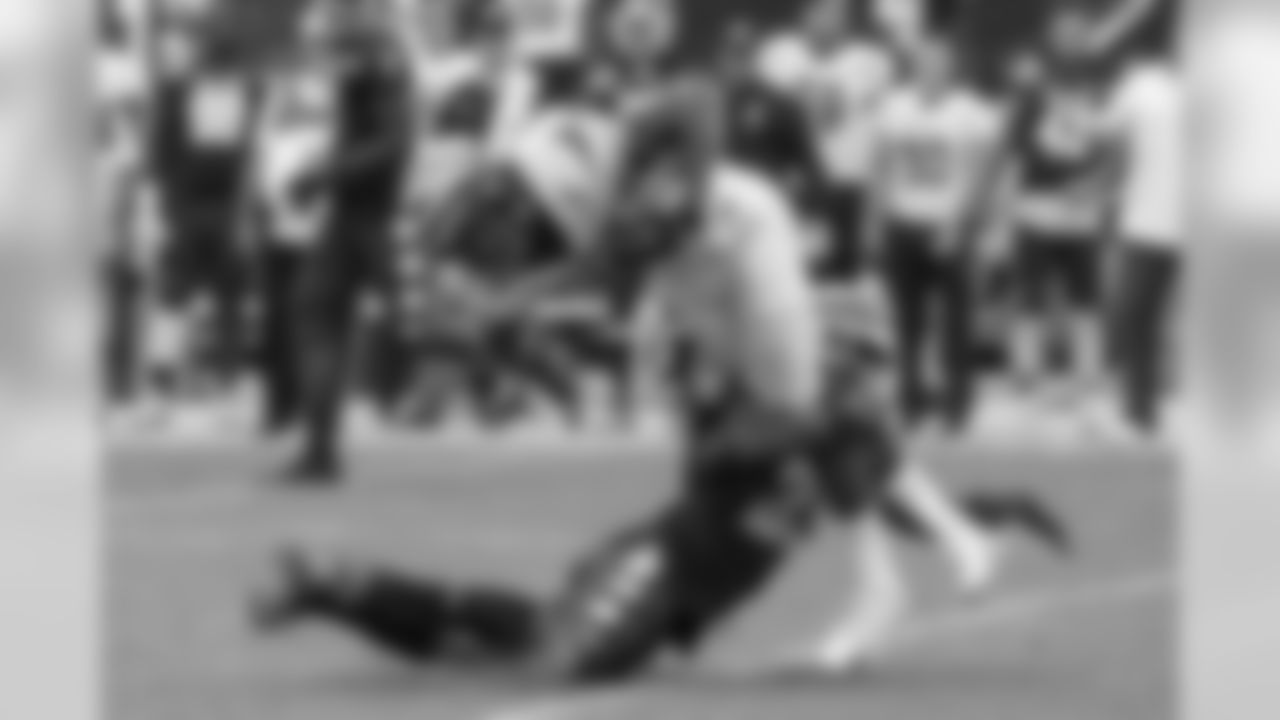
Memphis wide receiver Damonte Coxie (10) gets tackled by Temple cornerback Harrison Hand (23) to end the second half of an NCAA college football, Saturday, Oct. 12, 2019, in Philadelphia. Temple won 30-28. (AP Photo/Chris Szagola)

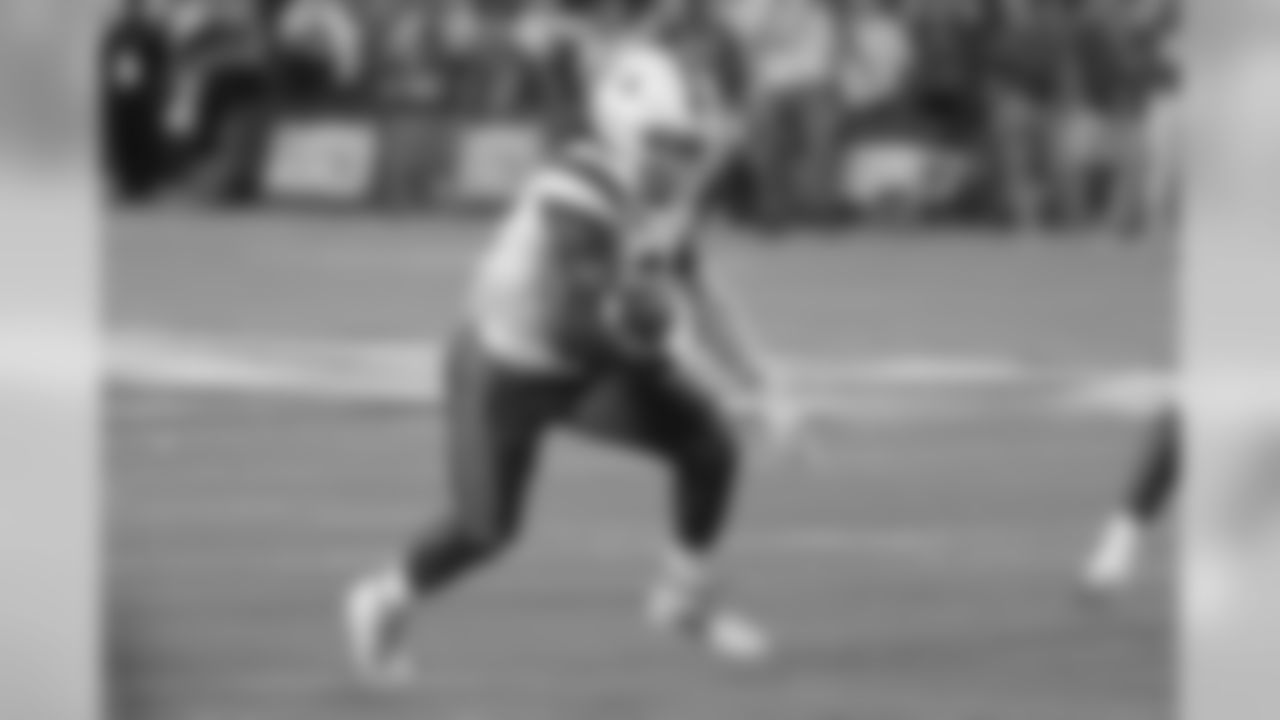
Miami wide receiver K.J. Osborn runs against Florida after a reception during the second half of an NCAA college football game, Saturday, Aug. 24, 2019, in Orlando, Fla. (AP Photo/John Raoux)

Miami wide receiver K.J. Osborn (2) sets up for a play at the line of scrimmage during the second half of an NCAA college football game against Florida Saturday, Aug. 24, 2019, in Orlando, Fla. (AP Photo/Phelan M. Ebenhack)

Miami wide receiver K.J. Osborn, center, fumbles the ball as he is hit by Florida linebacker Jonathan Greenard, left, and defensive back Shawn Davis during the second half of an NCAA college football game, Saturday, Aug. 24, 2019, in Orlando, Fla. (AP Photo/John Raoux)

Miami wide receiver K.J. Osborn runs against Florida after a reception during the second half of an NCAA college football game, Saturday, Aug. 24, 2019, in Orlando, Fla. (AP Photo/John Raoux)



Oregon State Beavers offensive lineman Blake Brandel (73) warms up before the first half of an NCAA college football game against the on Saturday, Aug. 26, 2017, in Fort Collins, Colo. (AP Photo/David Zalubowski)
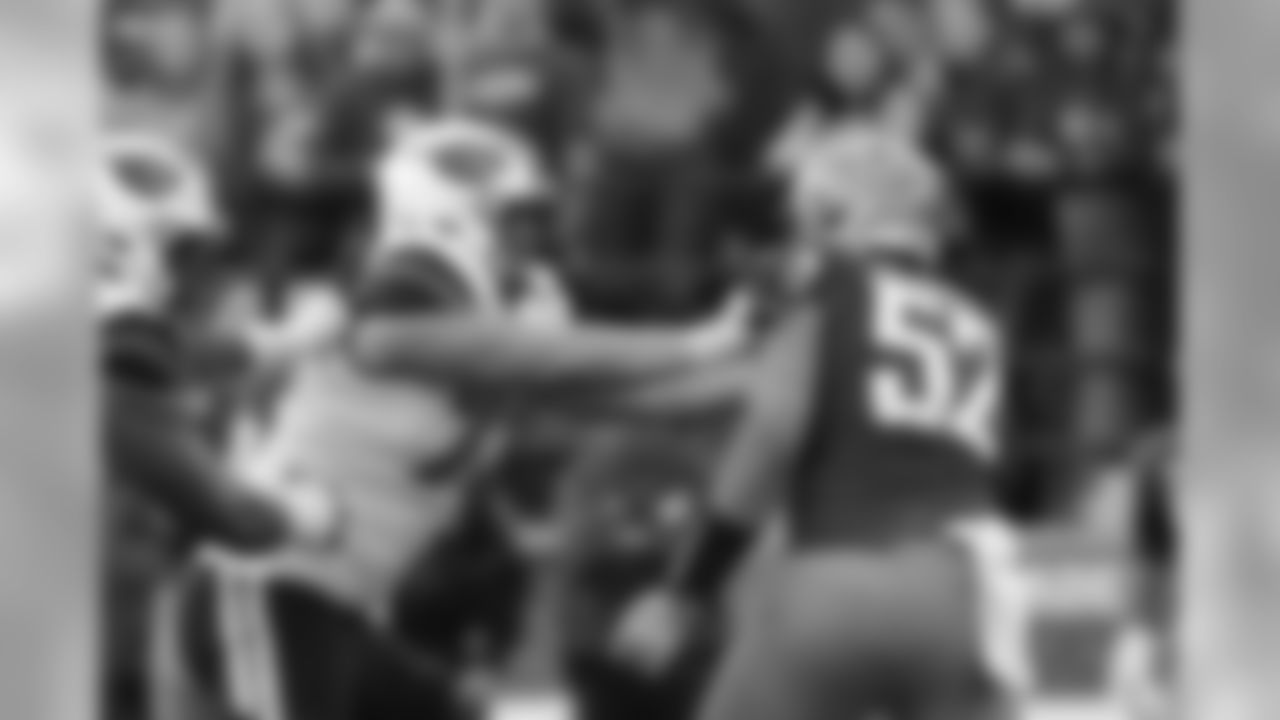
Oregon State offensive lineman Blake Brandel, left, blocks Washington State defensive lineman Kingston Fernandez (52) during the second half of an NCAA college football game in Pullman, Wash., Saturday, Sept. 16, 2017. (AP Photo/Young Kwak)

Oregon State Beavers offensive lineman Blake Brandel (73) warms up before the first half of an NCAA college football game against the on Saturday, Aug. 26, 2017, in Fort Collins, Colo. (AP Photo/David Zalubowski)
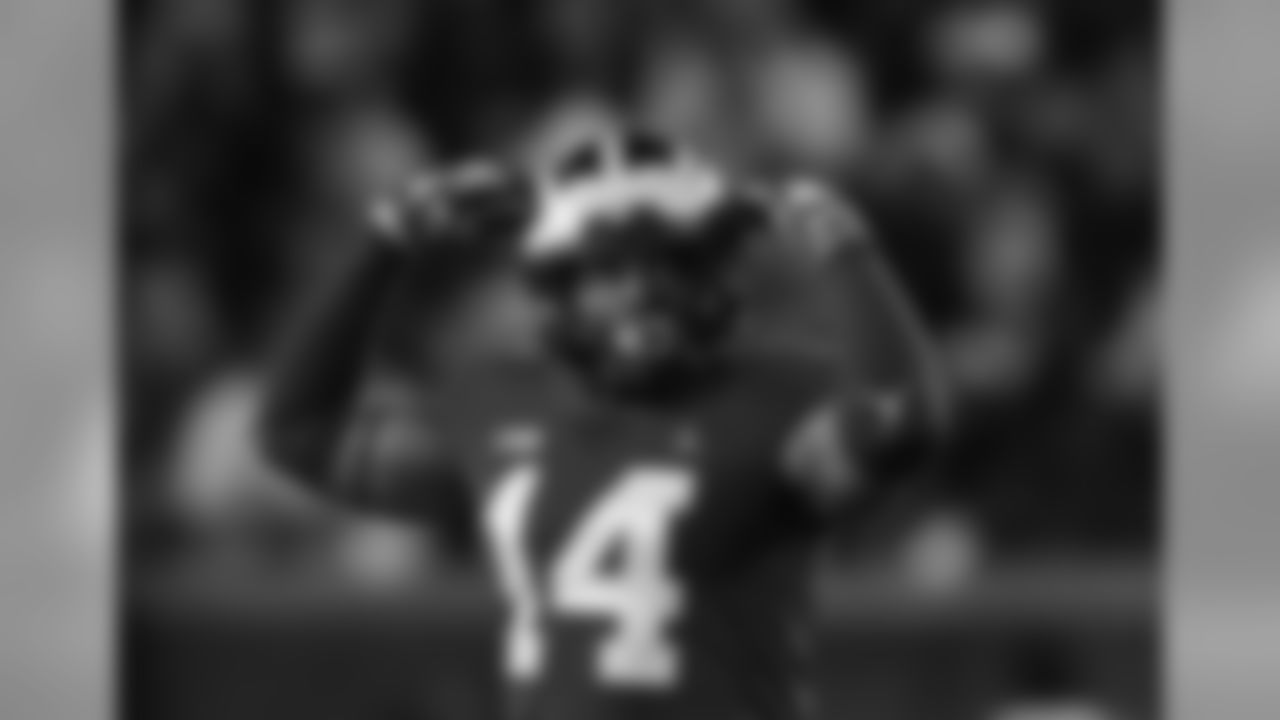
Michigan defensive back Josh Metellus (14) celebrates a play in the second half of an NCAA college football game against Indiana in Ann Arbor, Mich., Saturday, Nov. 17, 2018. (AP Photo/Paul Sancya)
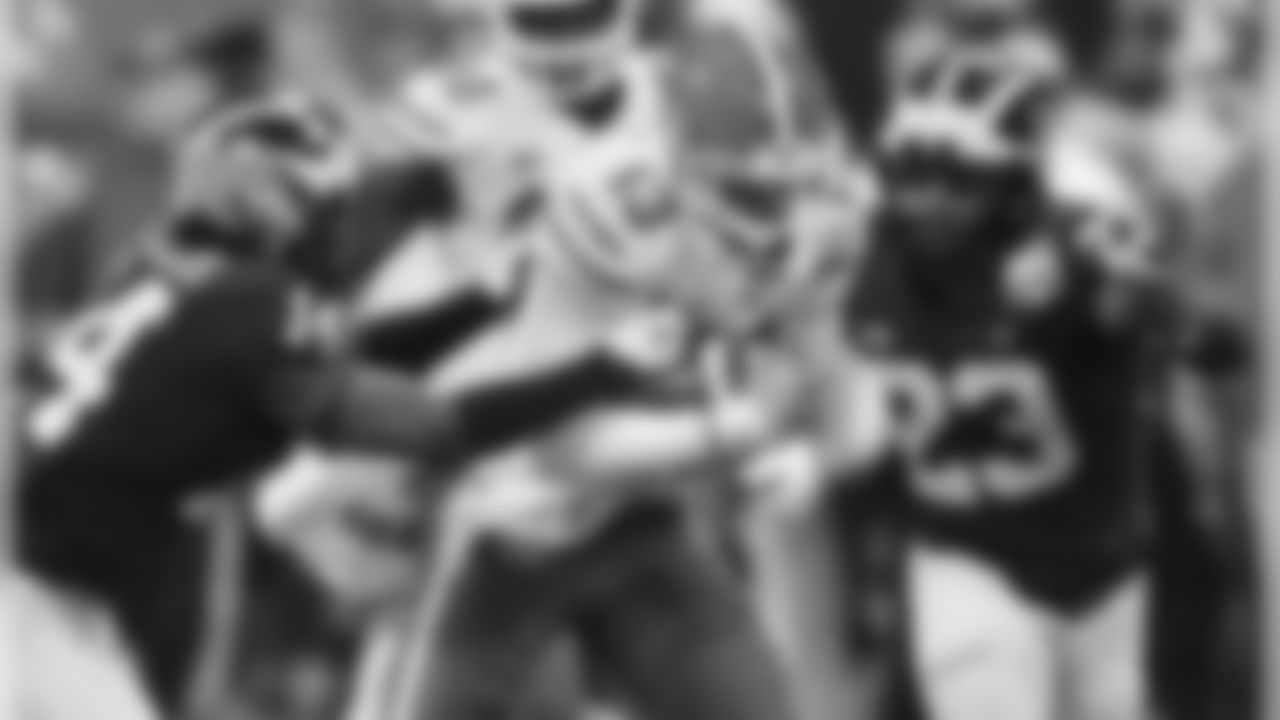
Florida quarterback Feleipe Franks (13) runs out of the pocket against Michigan defensive back Josh Metellus (14) during the first half of the Peach Bowl NCAA college football game, Saturday, Dec. 29, 2018, in Atlanta. (AP Photo/Mike Stewart)
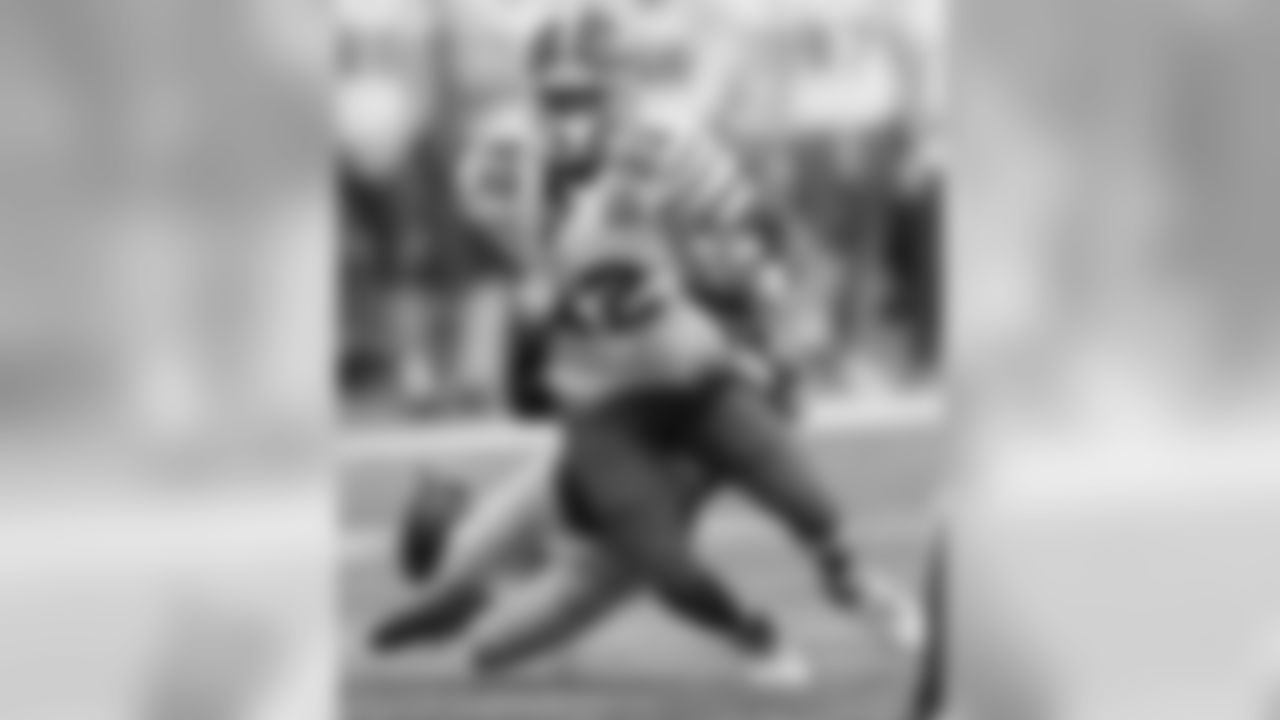
Michigan defensive back Josh Metellus (14) tackles Florida running back Lamical Perine (22) during the first half of the Peach Bowl NCAA college football game, Saturday, Dec. 29, 2018, in Atlanta. (AP Photo/John Bazemore)
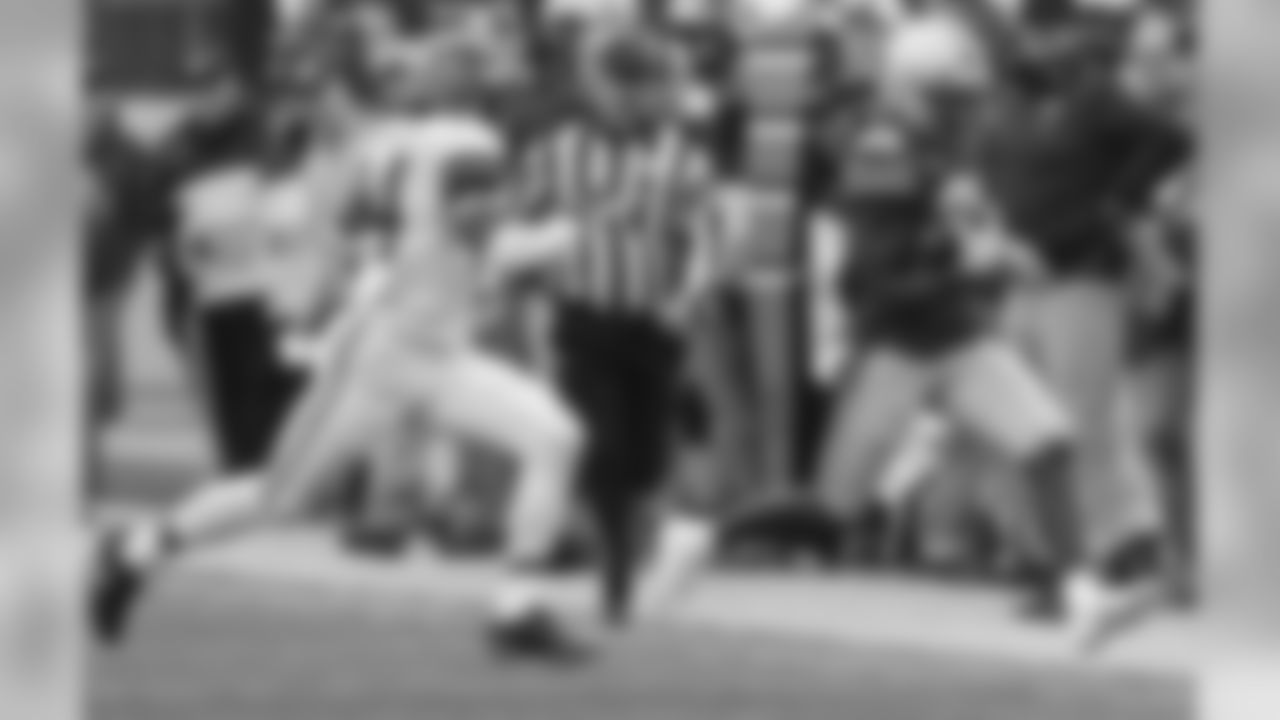
Michigan defensive back Josh Metellus, left, runs Ohio State receiver Parris Campbell out-of-bounds during the first half of an NCAA college football game Saturday, Nov. 24, 2018, in Columbus, Ohio. (AP Photo/Jay LaPrete)

Middle Tennessee quarterback Chase Cunningham (16) throws a pass, defended by Michigan defensive back Josh Metellus (14), in the third quarter of an NCAA football game in Ann Arbor, Mich., Saturday, Aug. 31, 2019. Michigan won 40-21. (AP Photo/Tony Ding)
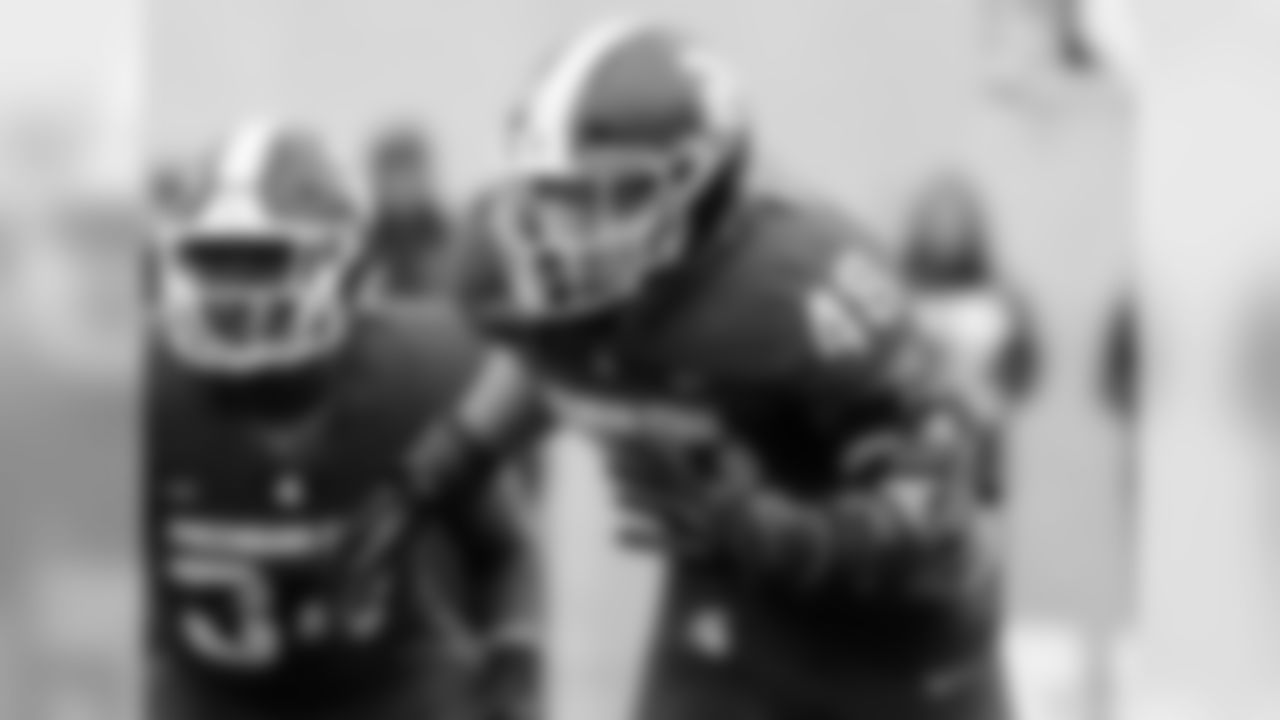
FILE - In this Oct. 20, 2018, file photo, Michigan State defensive end Kenny Willekes rushes the line during the second half of an NCAA college football game against Michigan in East Lansing, Mich. Ohio State visits Michigan State needing a win to stay on track for a Big Ten East showdown with Michigan in two weeks. (AP Photo/Carlos Osorio, File)
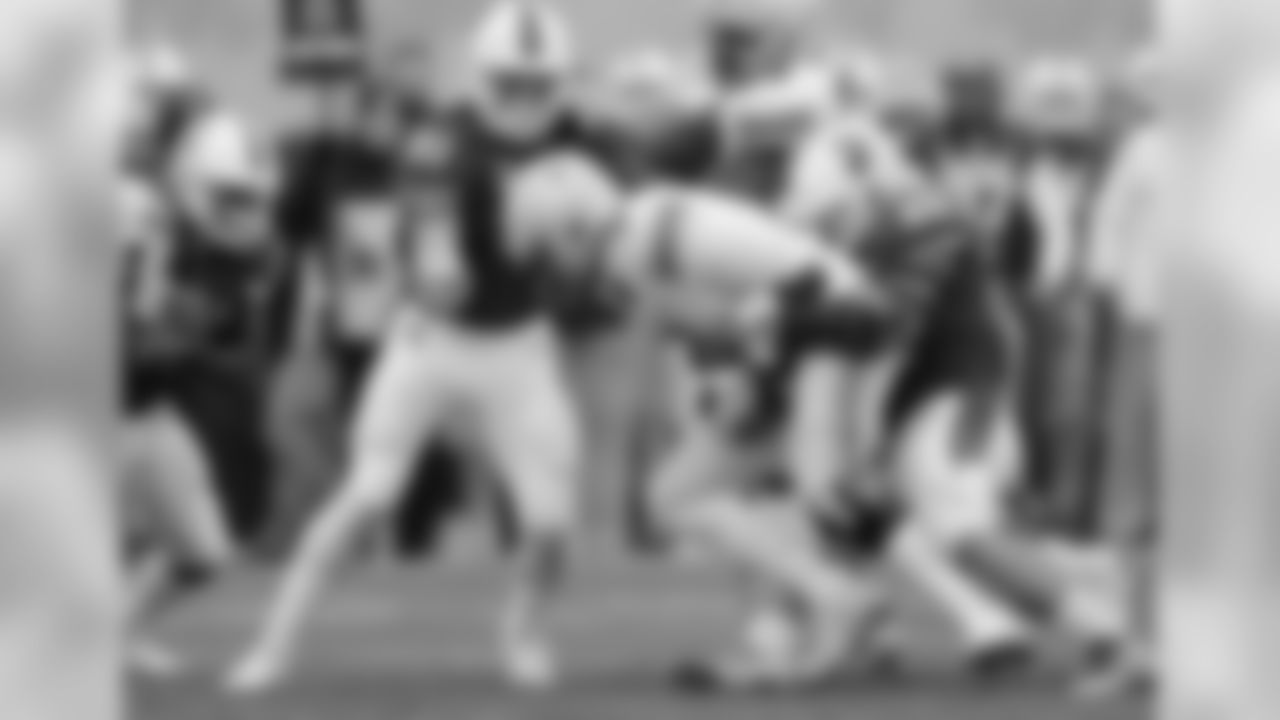
Ohio State quarterback Dwayne Haskins is sacked by Michigan State defensive end Kenny Willekes (48) during the first half of an NCAA college football game, Saturday, Nov. 10, 2018, in East Lansing, Mich. (AP Photo/Carlos Osorio)
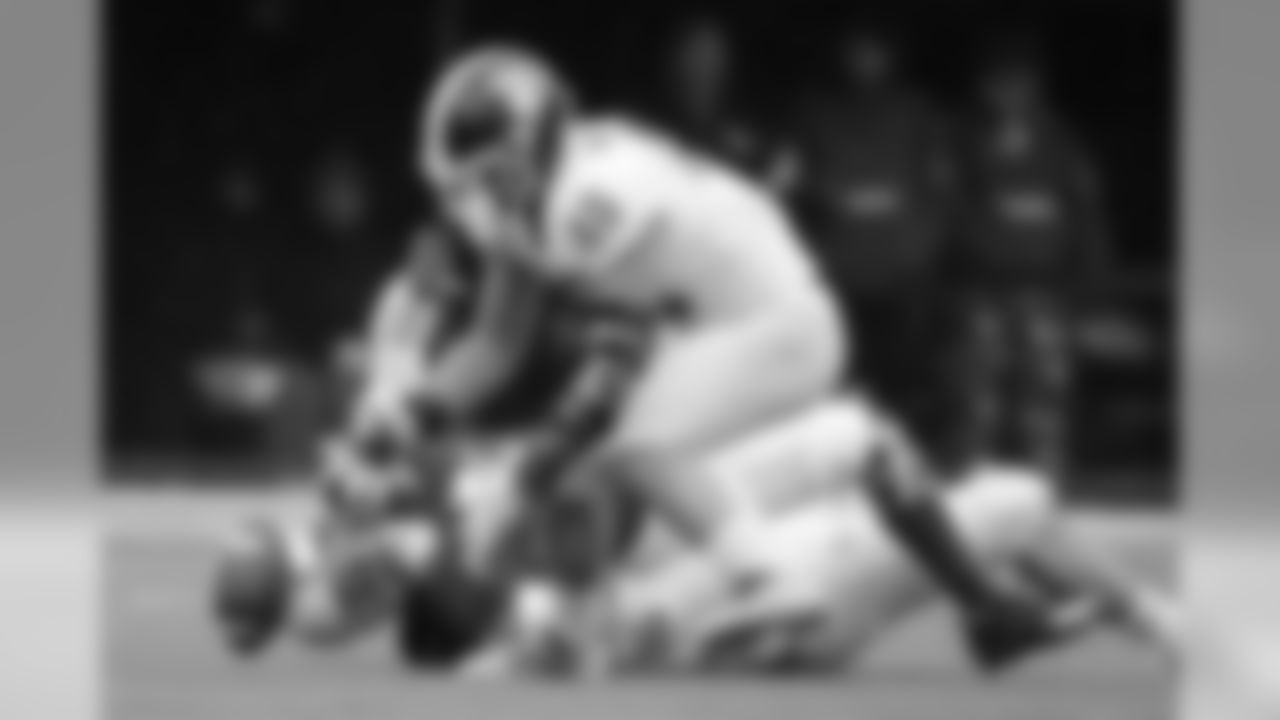
Michigan State defensive end Kenny Willekes (48) recovers a fumble for a turnover by Nebraska quarterback Adrian Martinez (2) during the first half of an NCAA college football game in Lincoln, Neb., Saturday, Nov. 17, 2018. (AP Photo/Nati Harnik)

Nebraska quarterback Adrian Martinez (2) carries the ball in front of Michigan State defensive end Kenny Willekes (48) during the first half of an NCAA college football game in Lincoln, Neb., Saturday, Nov. 17, 2018. (AP Photo/Nati Harnik)

Michigan State's Kenny Willekes reacts against Ohio State during the first quarter of an NCAA college football game, Saturday, Nov. 10, 2018, in East Lansing, Mich. (AP Photo/Al Goldis)

Penn State linebacker Ellis Brooks, center, pressures as Iowa quarterback Nate Stanley pulls back to pass during the first half of an NCAA college football game, Saturday, Oct. 12, 2019, in Iowa City, Iowa. (AP Photo/Matthew Putney)

Iowa quarterback Nate Stanley gets set during the first half of an NCAA college football game, Saturday, Oct. 12, 2019, in Iowa City, Iowa. (AP Photo/Matthew Putney)

Iowa quarterback Nate Stanley warms up before an NCAA college football game against Purdue, Saturday, Oct. 19, 2019, in Iowa City, Iowa. (AP Photo/Charlie Neibergall)
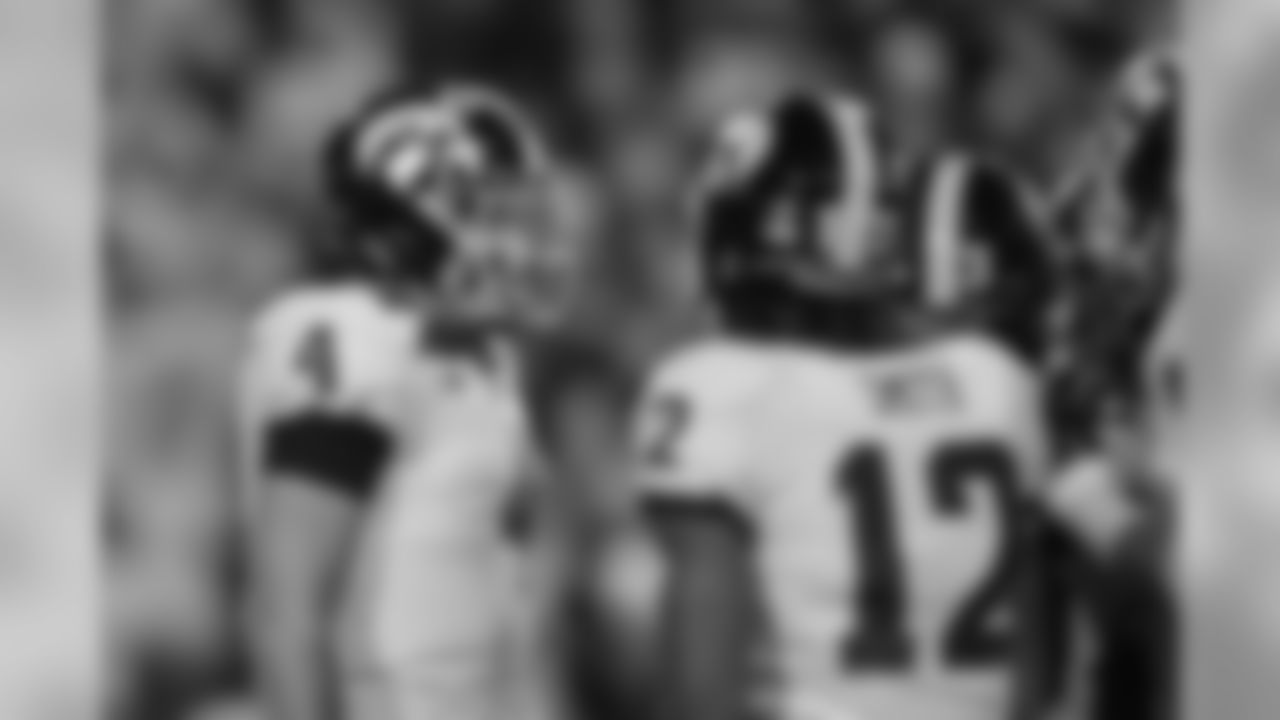
Iowa quarterback Nate Stanley, left, talks with the offense in a huddle during the first half of an NCAA college football game, Saturday, Oct. 12, 2019, in Iowa City, Iowa. (AP Photo/Matthew Putney)

Iowa quarterback Nate Stanley (4) passes against Northwestern during the first half of an NCAA college football game, Saturday, Oct. 26, 2019, in Evanston, Ill. (AP Photo/David Banks)
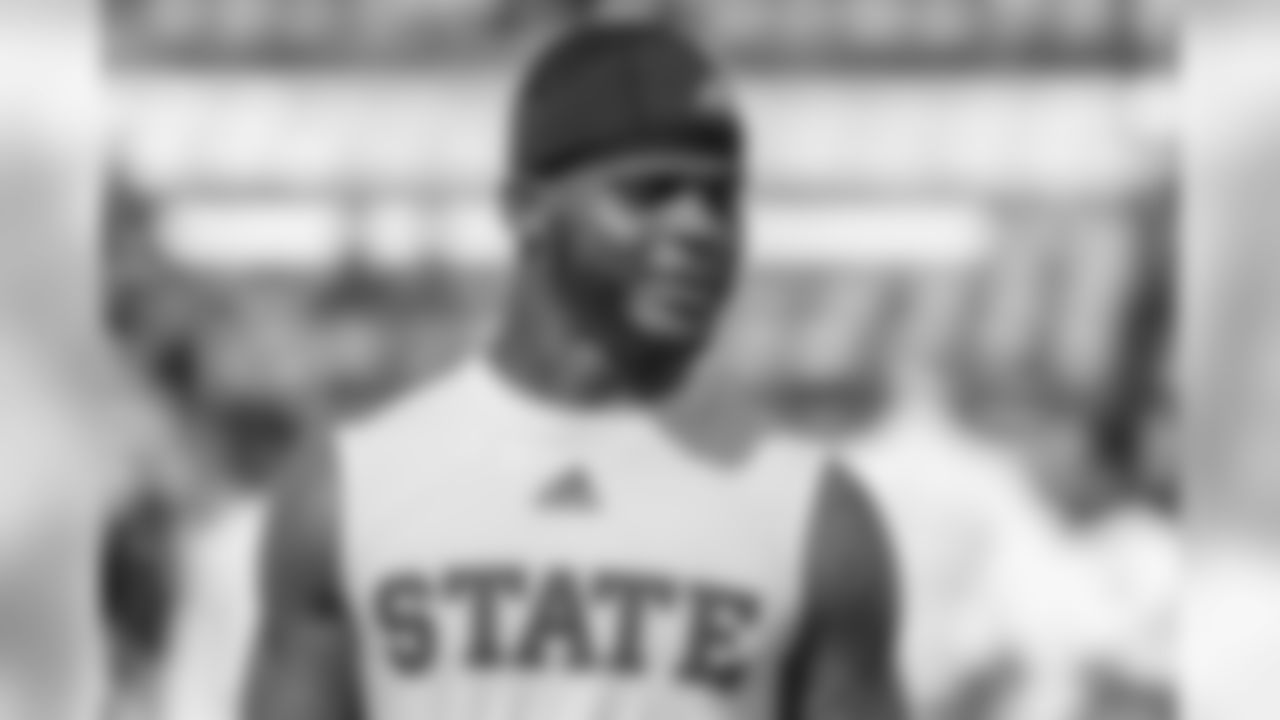
Mississippi State defensive back Brian Cole II (32) warms up before an NCAA football game on Saturday, Sept. 14, 2019 at Mississippi St. in Starkville, Miss. (AP Photo/Vasha Hunt)
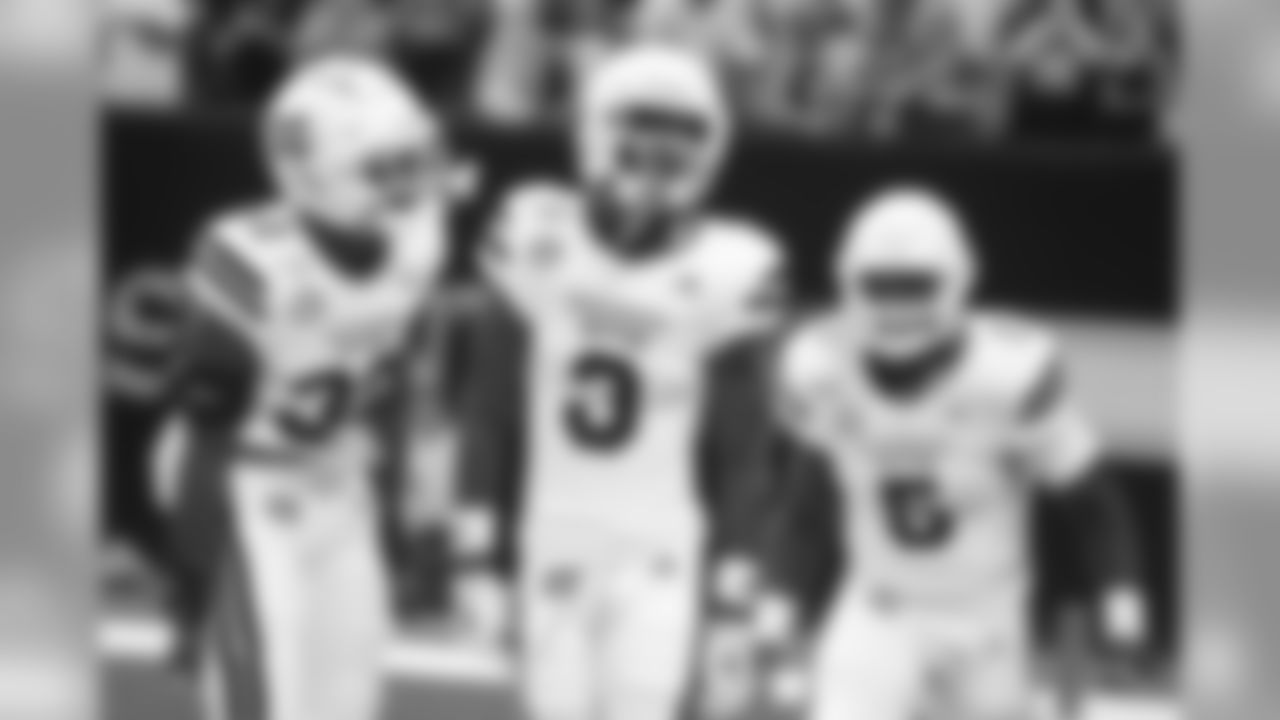
Mississippi State Bulldogs Cameron Dantzler (3) celebrates his interception with teammates Brian Cole II (32) and Chauncey Rivers (5) during the first half of an NCAA college football game against Louisiana Lafayetter in New Orleans, Saturday, Aug. 31, 2019. (AP Photo/Chuck Cook)

Mississippi State defensive back Brian Cole II (32) reacts during the first half of an NCAA football game on Saturday, Sept. 14, 2019 at Mississippi St. in Starkville, Miss. (AP Photo/Vasha Hunt)

Mississippi State quarterback Garrett Shrader (6) passes while safety Brian Cole (32) defends during the team's spring NCAA college football game in Starkville, Miss., Saturday, April 13, 2019. (AP Photo/Rogelio V. Solis)


It has been an incredibly run of continuity that is becoming less common in the era of free agency.
The band can't stay together forever, however, and that's a reason the NFL has compensatory draft picks to help teams offset losses from the previous year's free agency cycle.
Minnesota was awarded three compensatory picks, which can now be traded like any other pick. The rule change allowing that has given GMs so much more opportunity to navigate the draft board.
Spielman this year opted to trade away the third-round compensatory pick (105th overall) to New Orleans and wound up collecting four picks that were used on Lynch, Hand, Brandel and QB Nate Stanley.
6. Keeping an eye on 2021 | By Eric Smith
Just because it's called the 2020 NFL Draft doesn't mean all of the focus has to be on that particular year.
Spielman showed as much when he made a pair of trades on Day 3 that allowed Minnesota to acquire picks for the 2021 draft.
First, the Vikings sent a 2020 fifth-round pick (155th overall) to the Bears for a 2021 fourth-rounder. Minnesota then sent 2020 picks in the sixth (No. 201) and seventh rounds (No. 219) to Baltimore the 225th pick in 2020, plus a 2021 fifth-round pick. (The Vikings took Willekes at No. 225).
Spielman, who has shown an affinity to trade and collect as many picks as he can, commented Saturday night on having an eye on 2021. He said those additions, combined with a 2021 fourth-round pick from Buffalo that was part of the Stefon Diggs trade, and potential compensatory picks have the Vikings in good shape for next year.
"I treasure those, and I try to collect as many as I can," Spielman said. "So that's why we — when you have that much draft capital going into it and you're able to flip some picks into next year's picks, and I don't know what the depth of next year's draft's going to be, but to start off right now where we stand to have 12 draft picks, who knows where we're going to end up next year?"
Spielman also noted that he could use Minnesota's 2021 draft capital in case the Vikings need to add a player via trade in the coming months.
"Those are huge. A couple years ago, we traded for Brett Jones [in training camp] and we used a seventh-rounder there," Spielman said. "So, you don't know what potentially can happen once we get into training camp or the season.
"But to have that much draft capital and be able to still maybe give a later-round pick and still have two or three more in your pocket, is huge going into that," Spielman added.
















